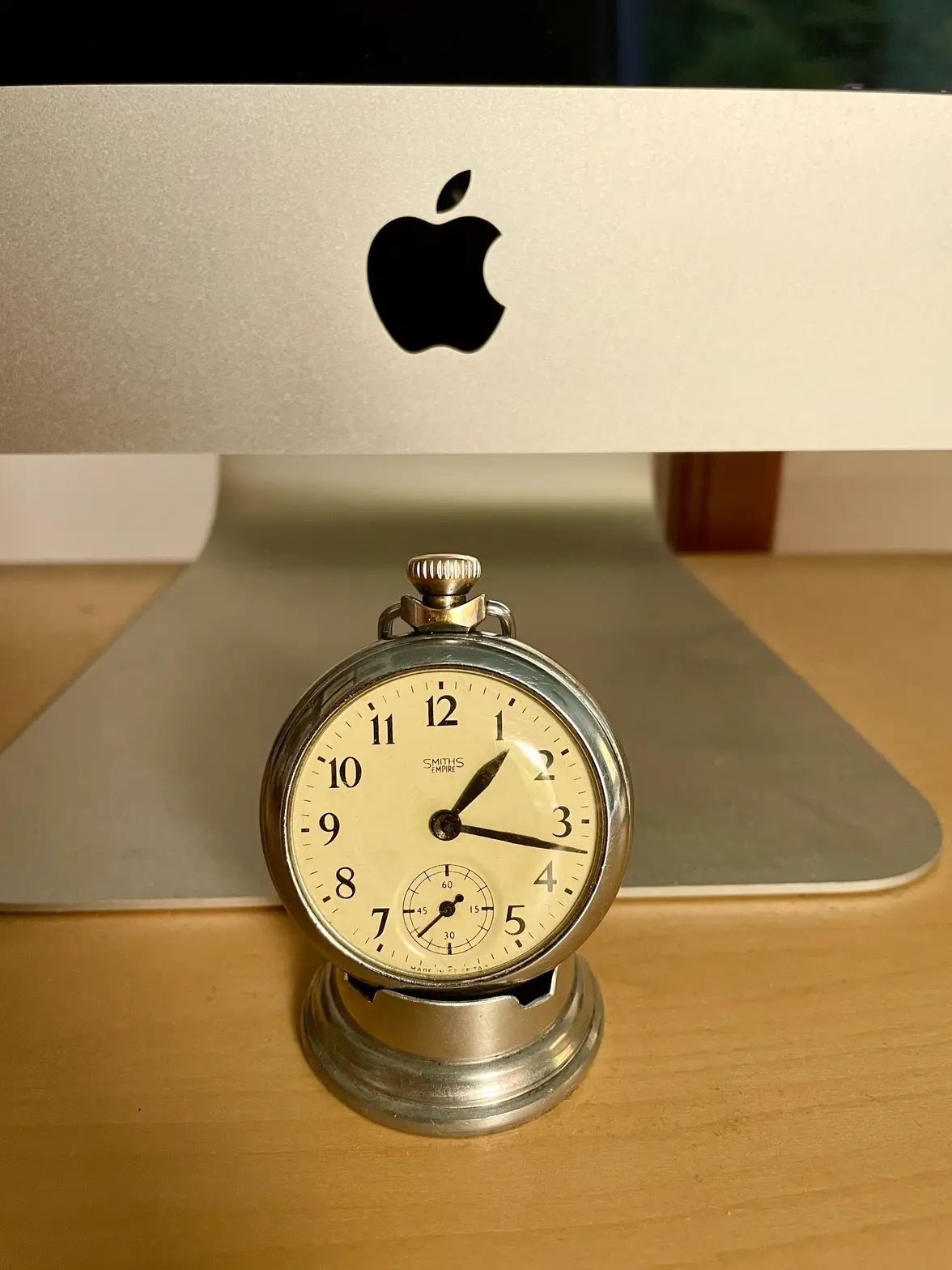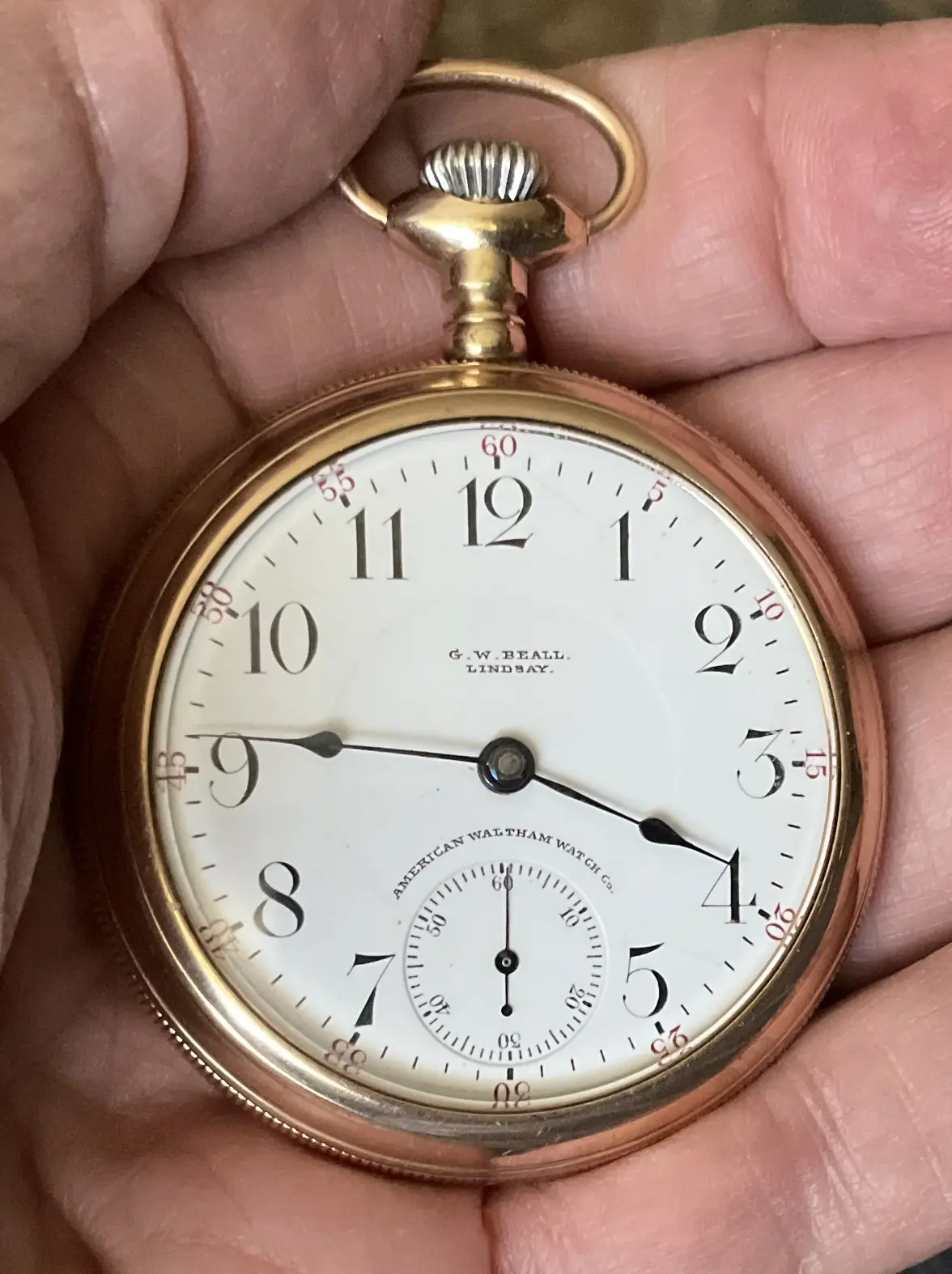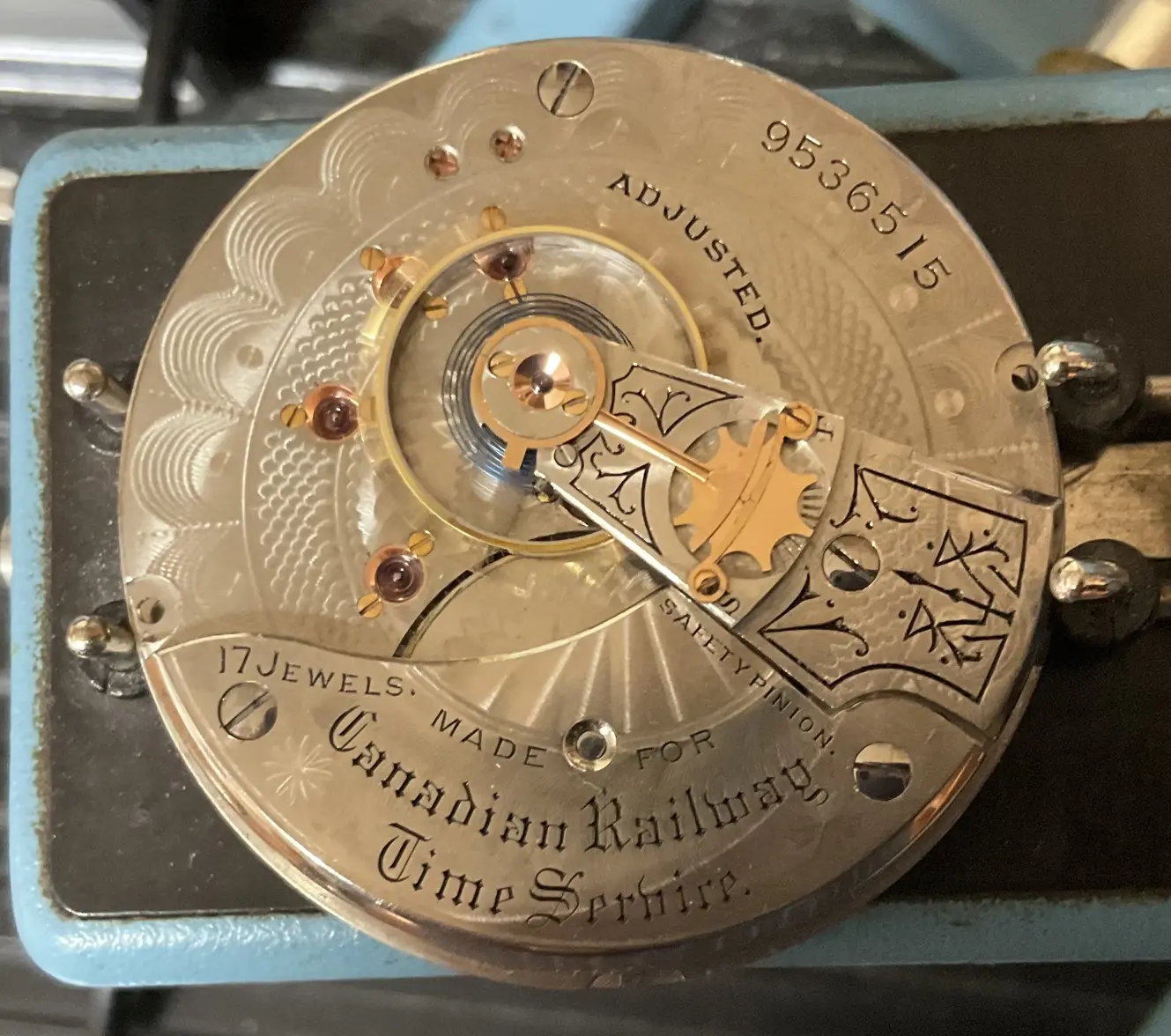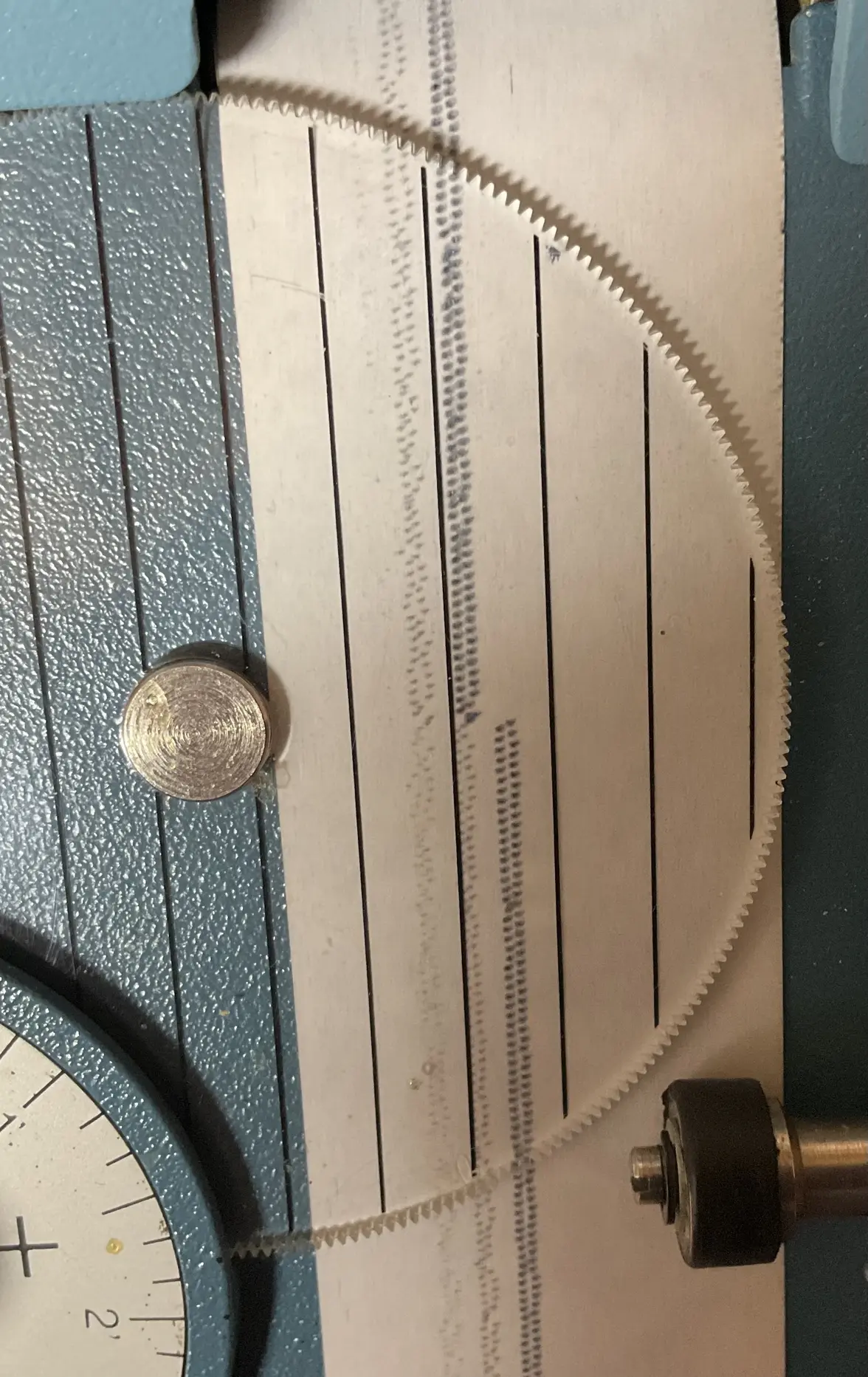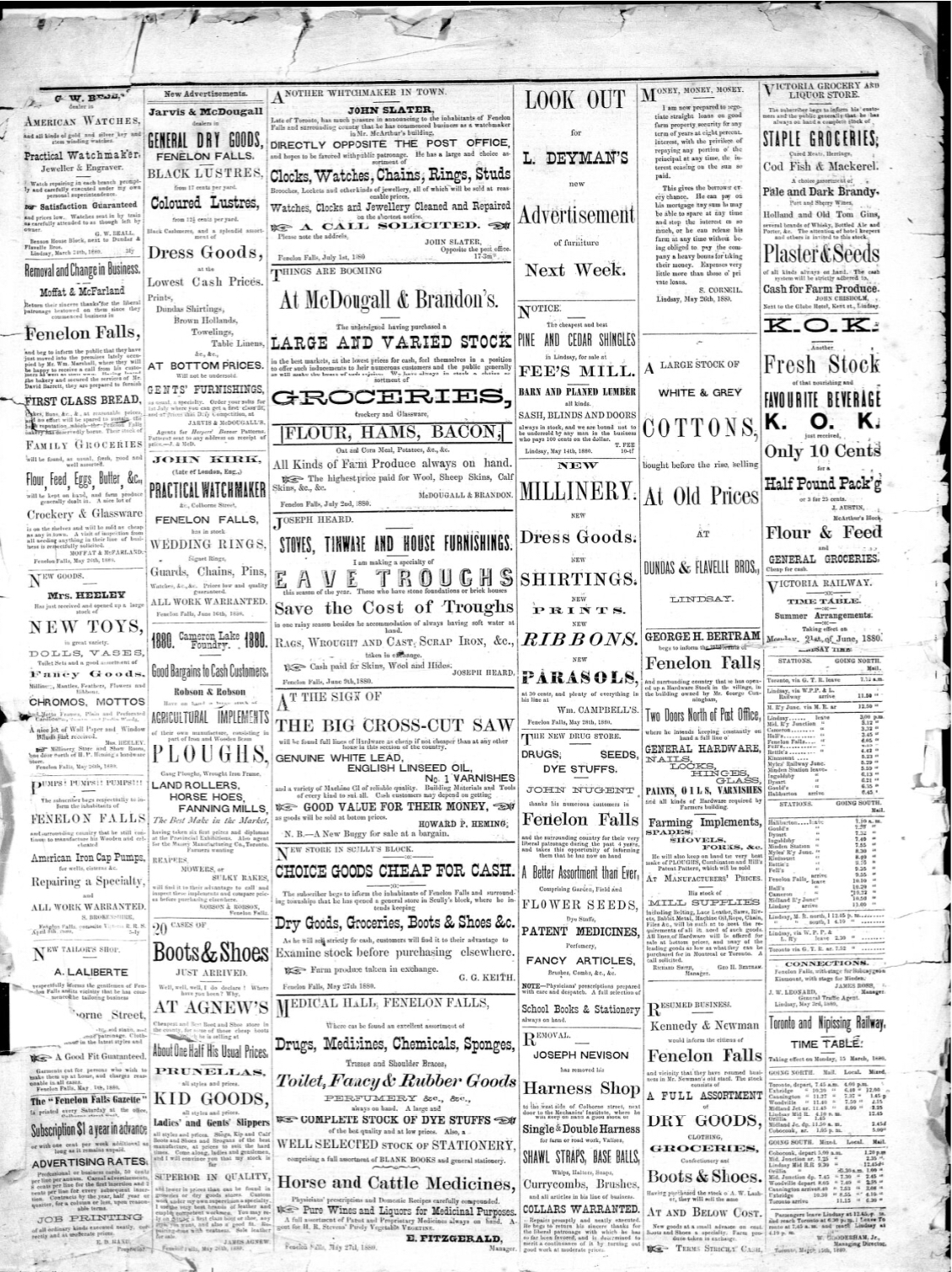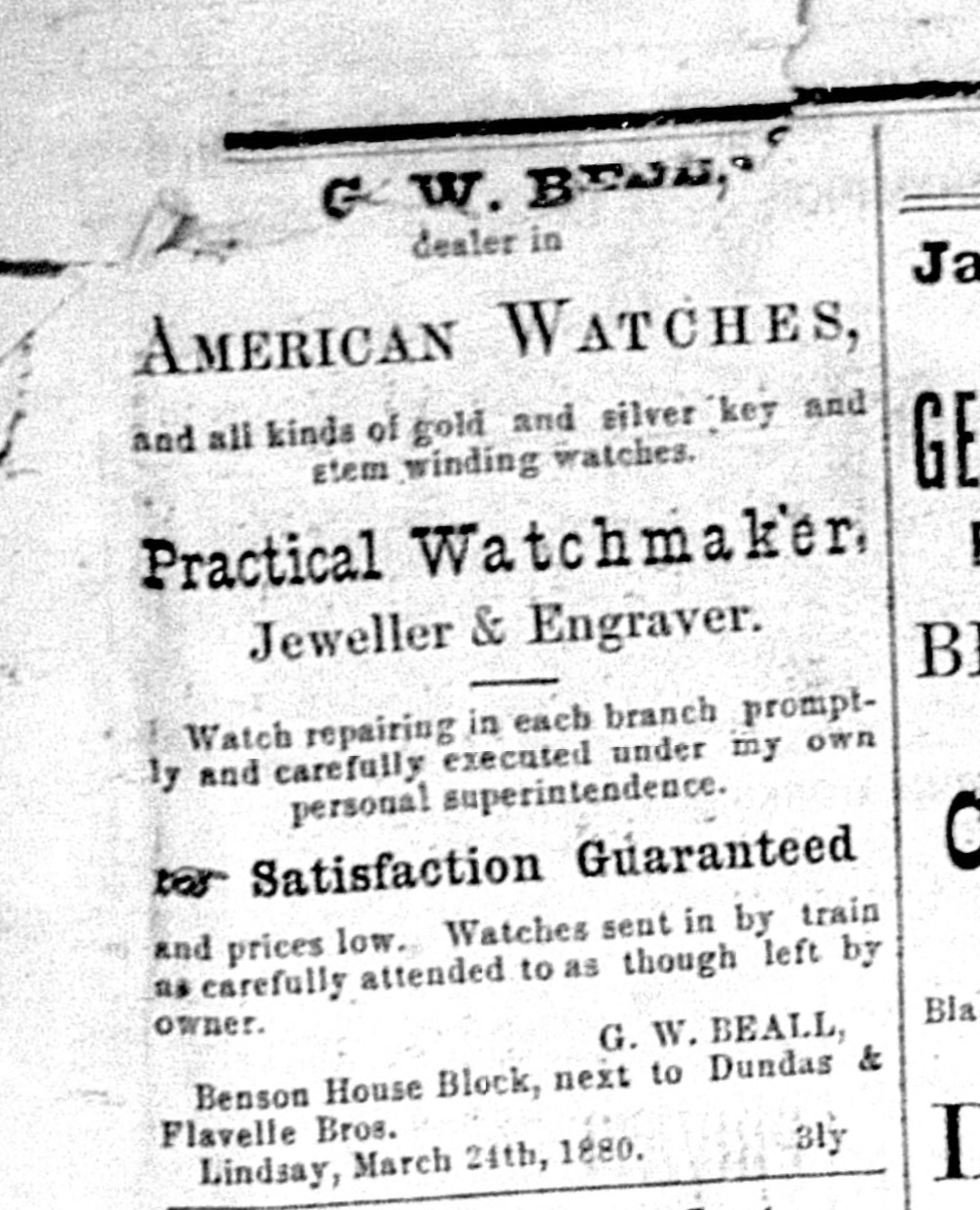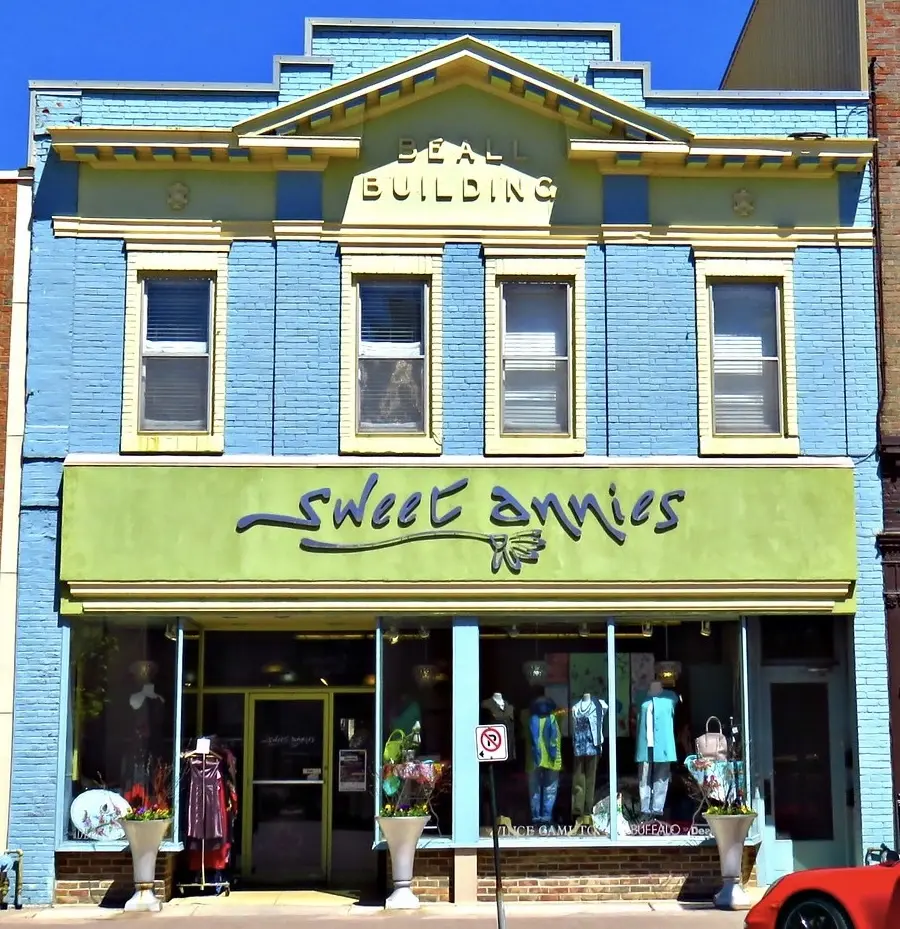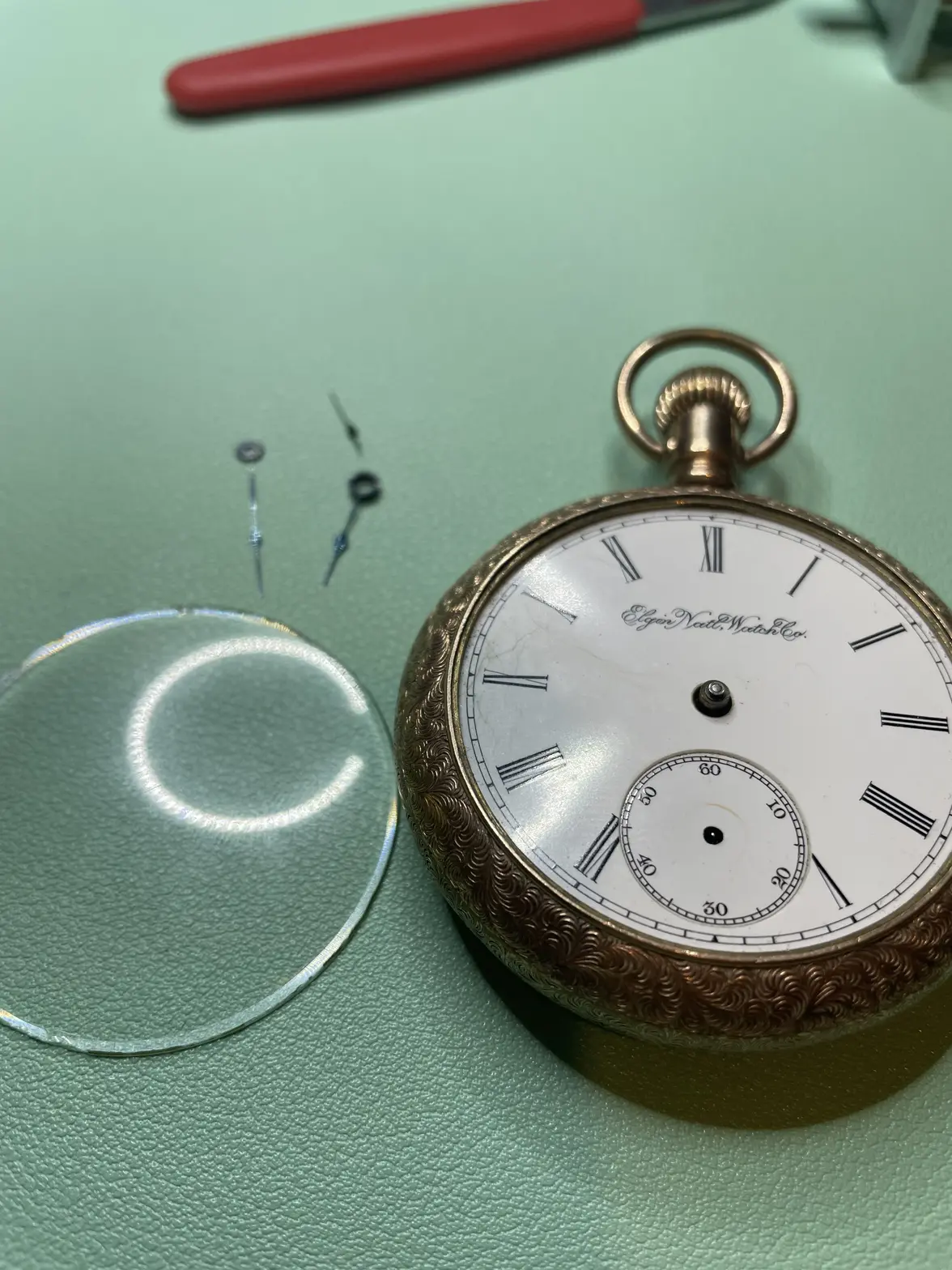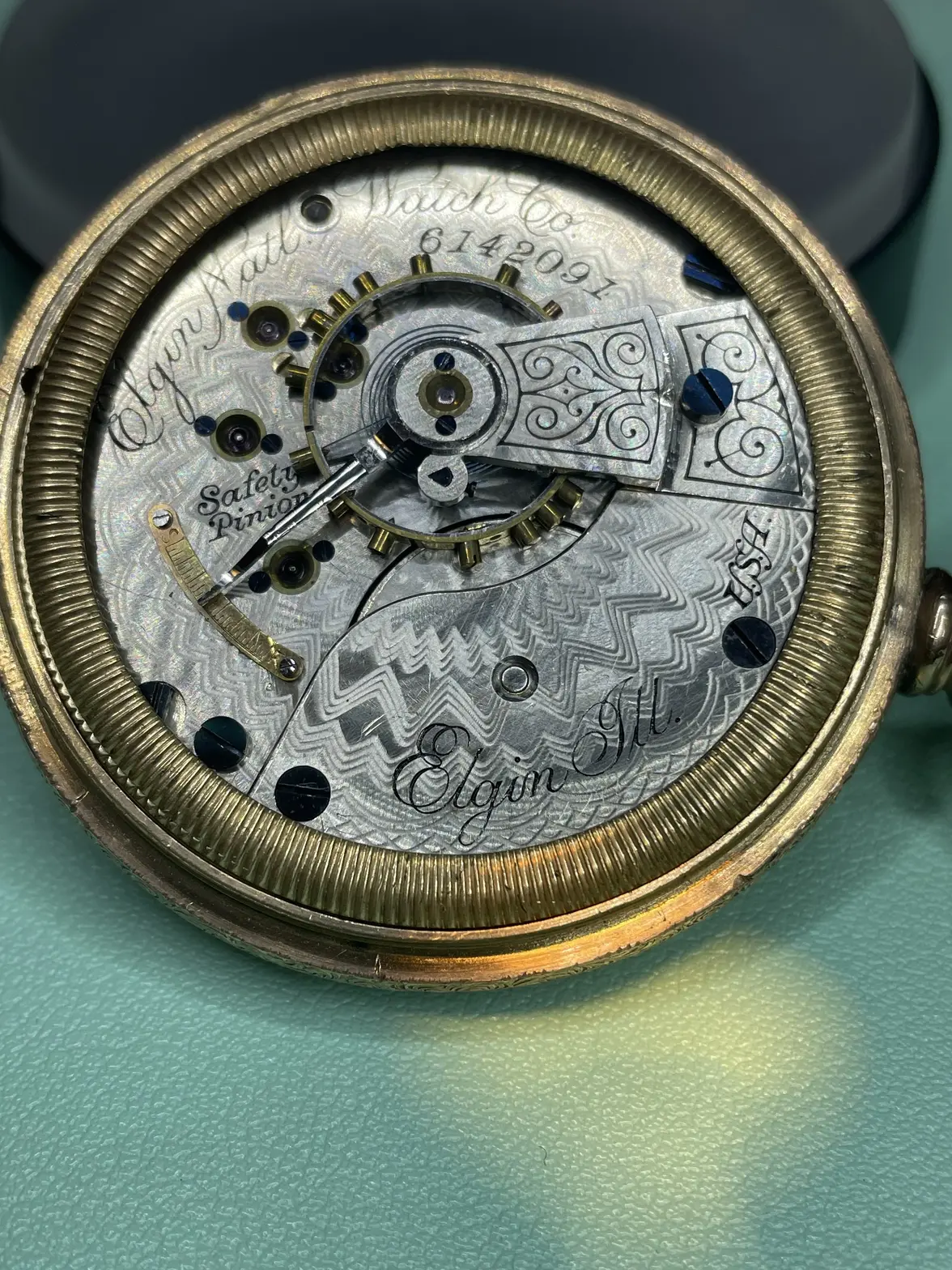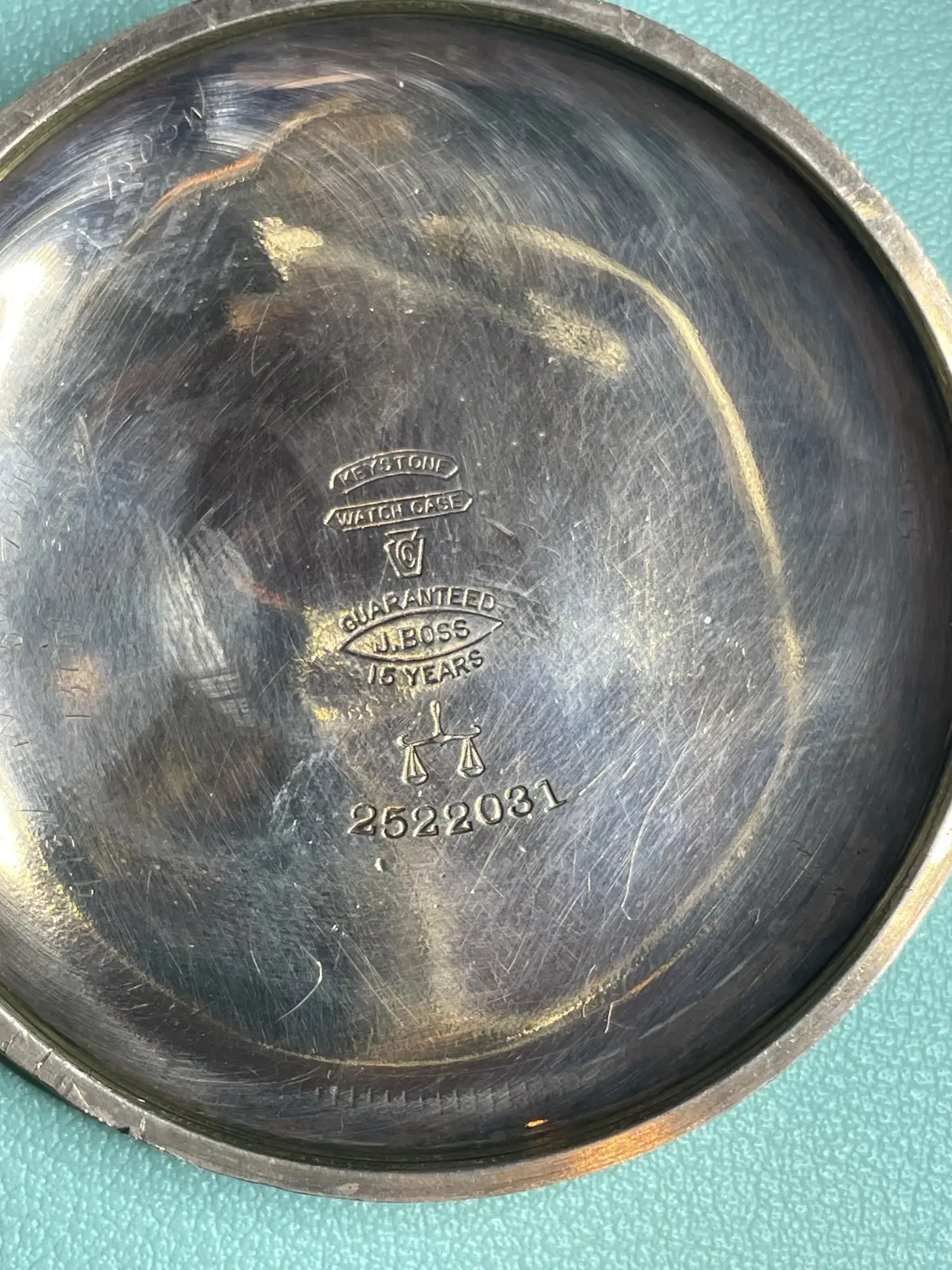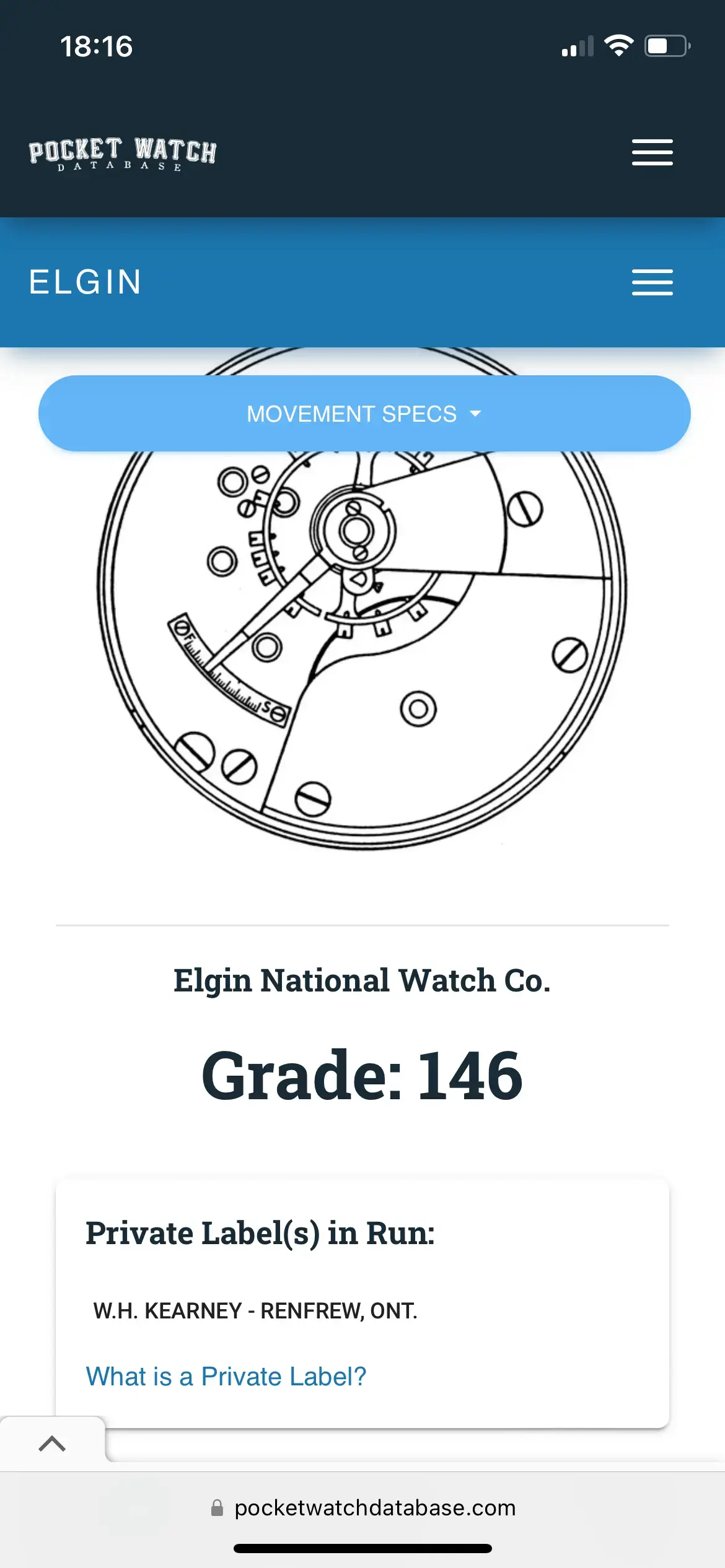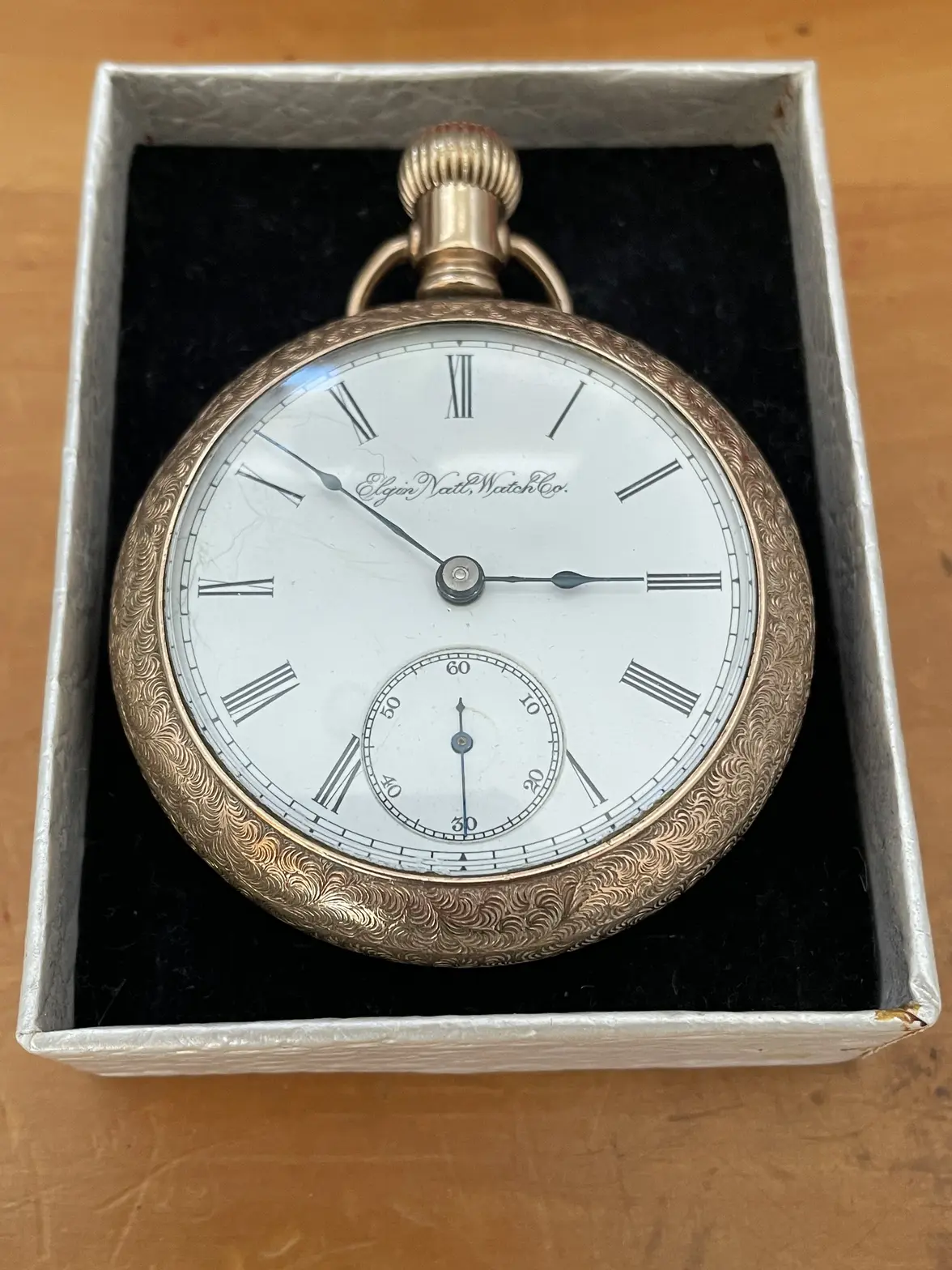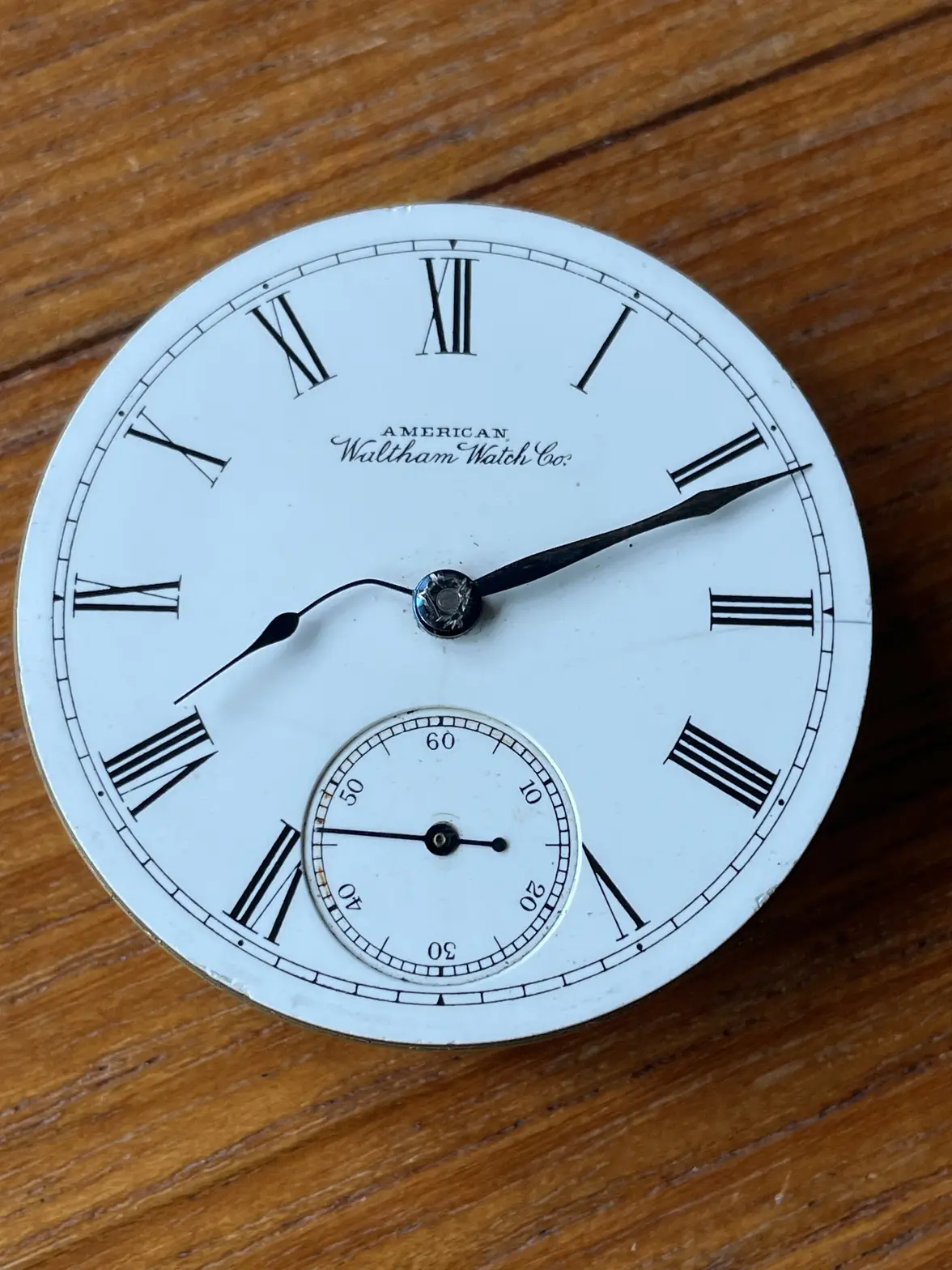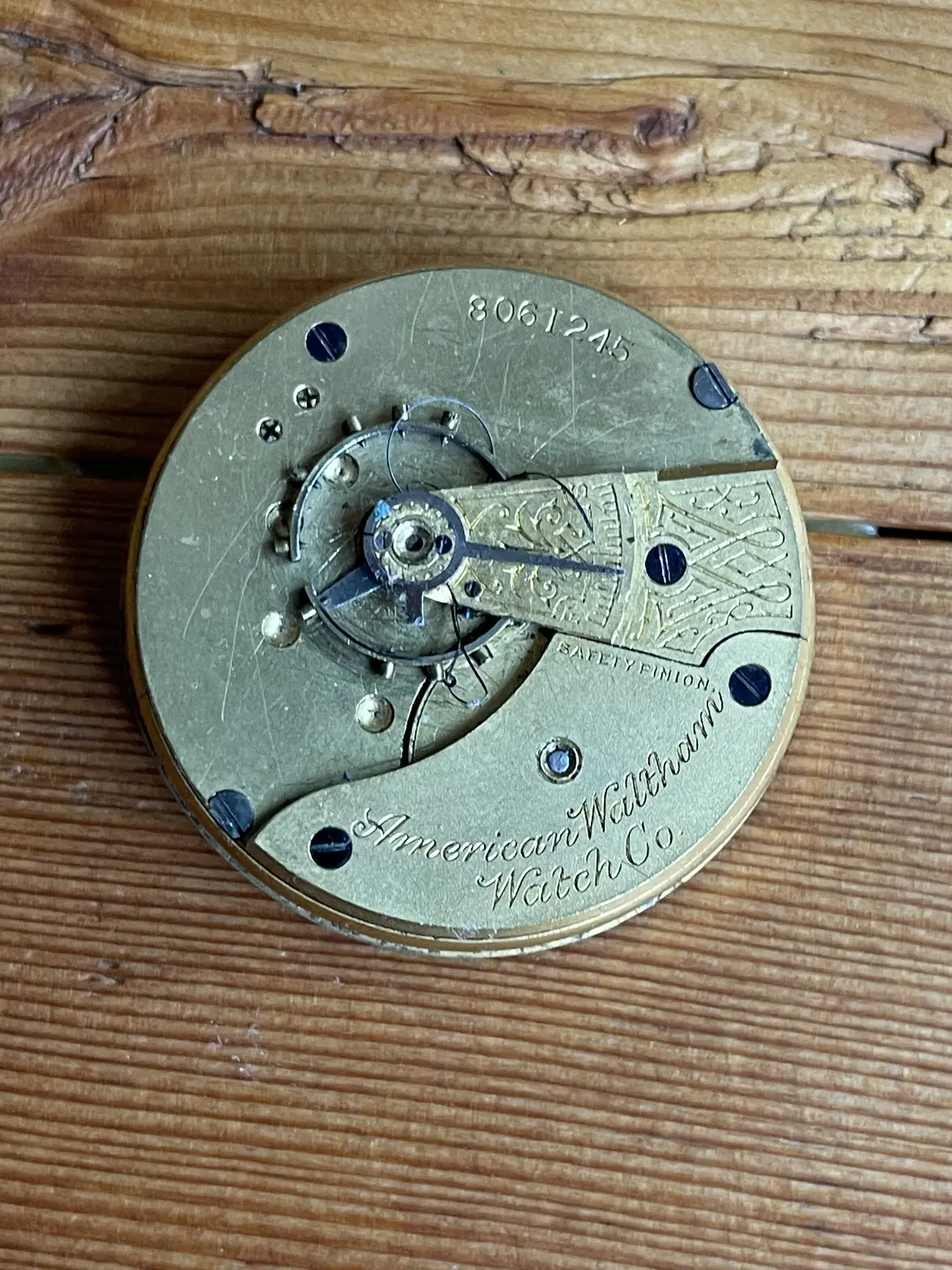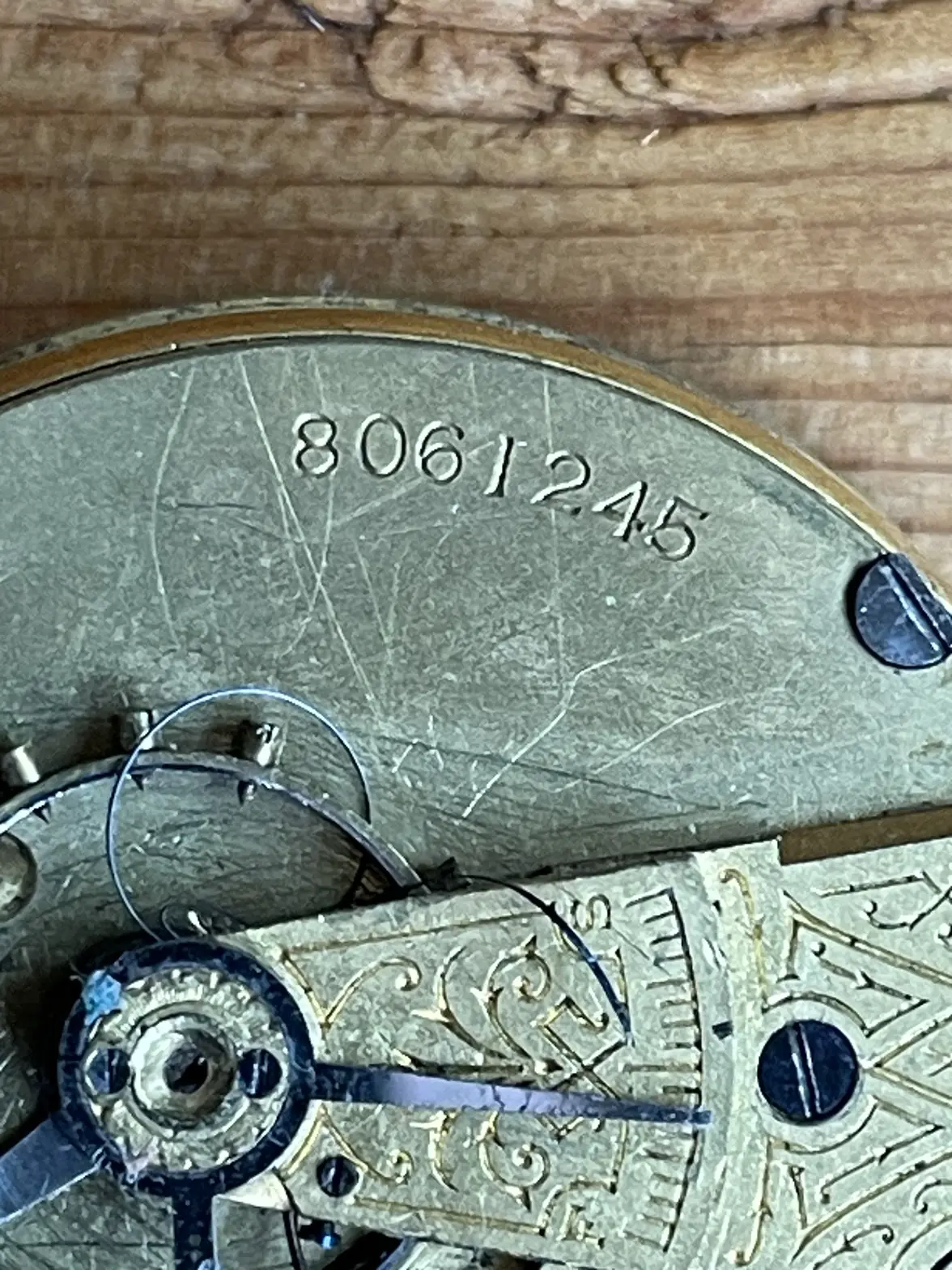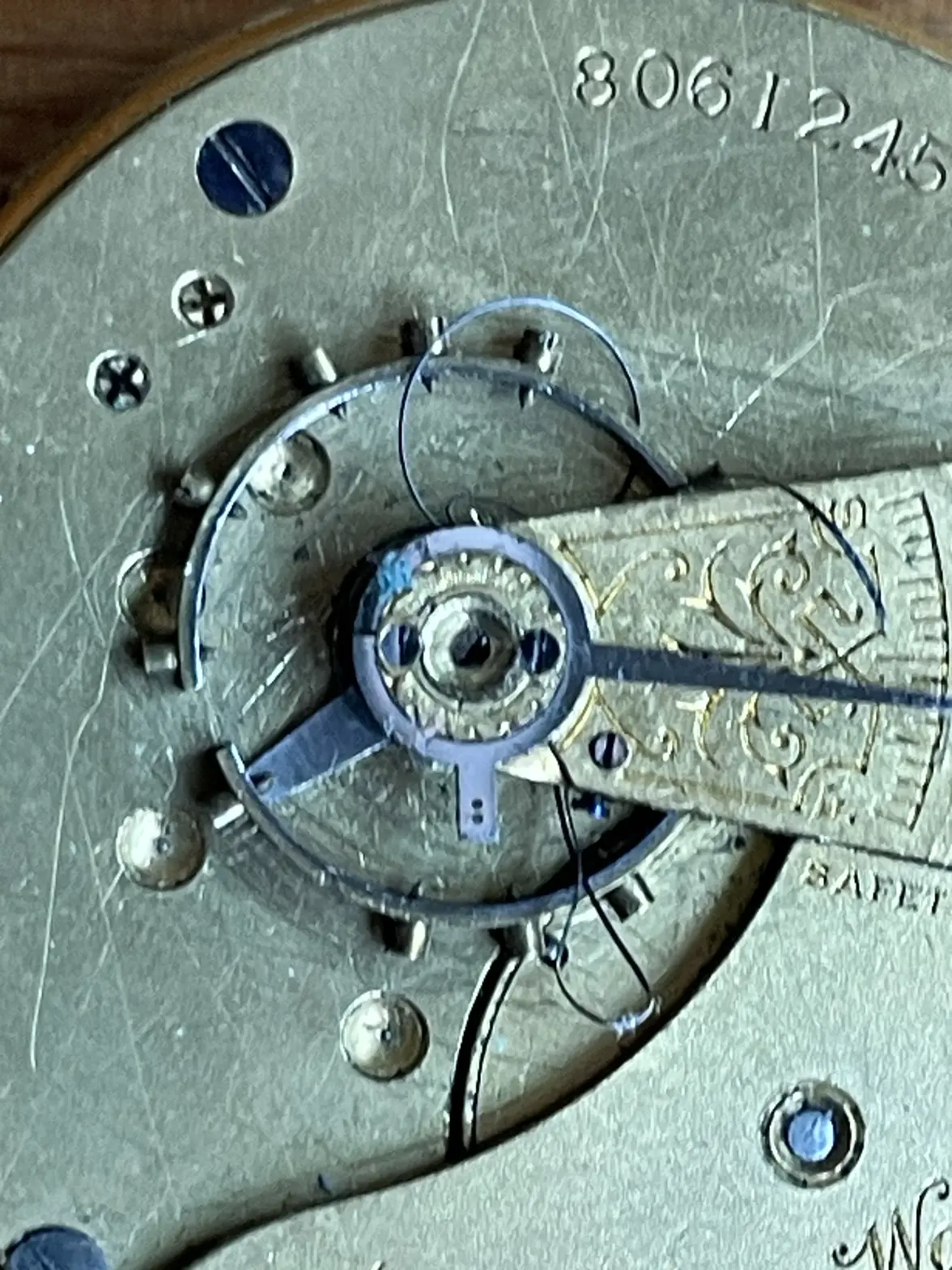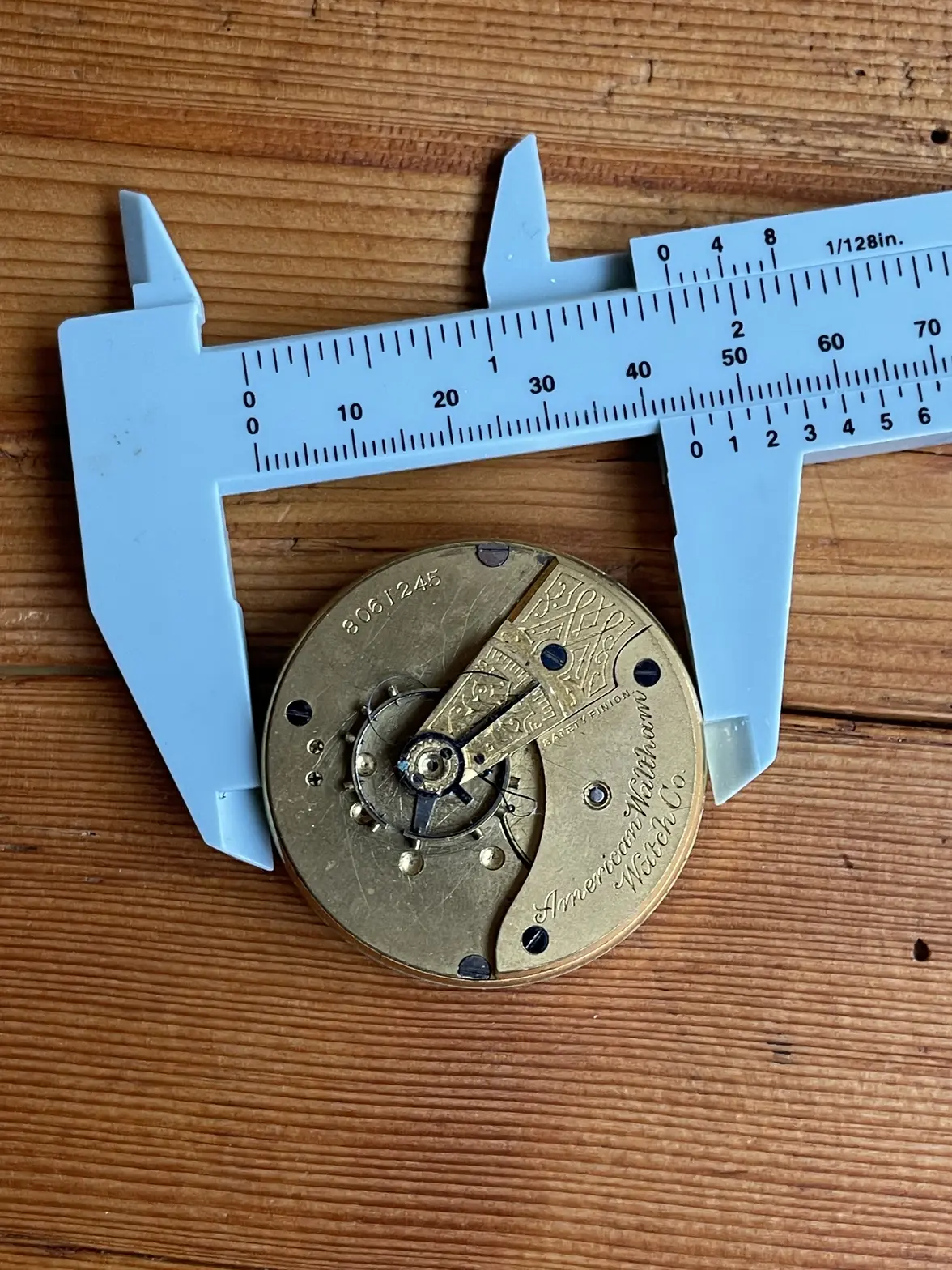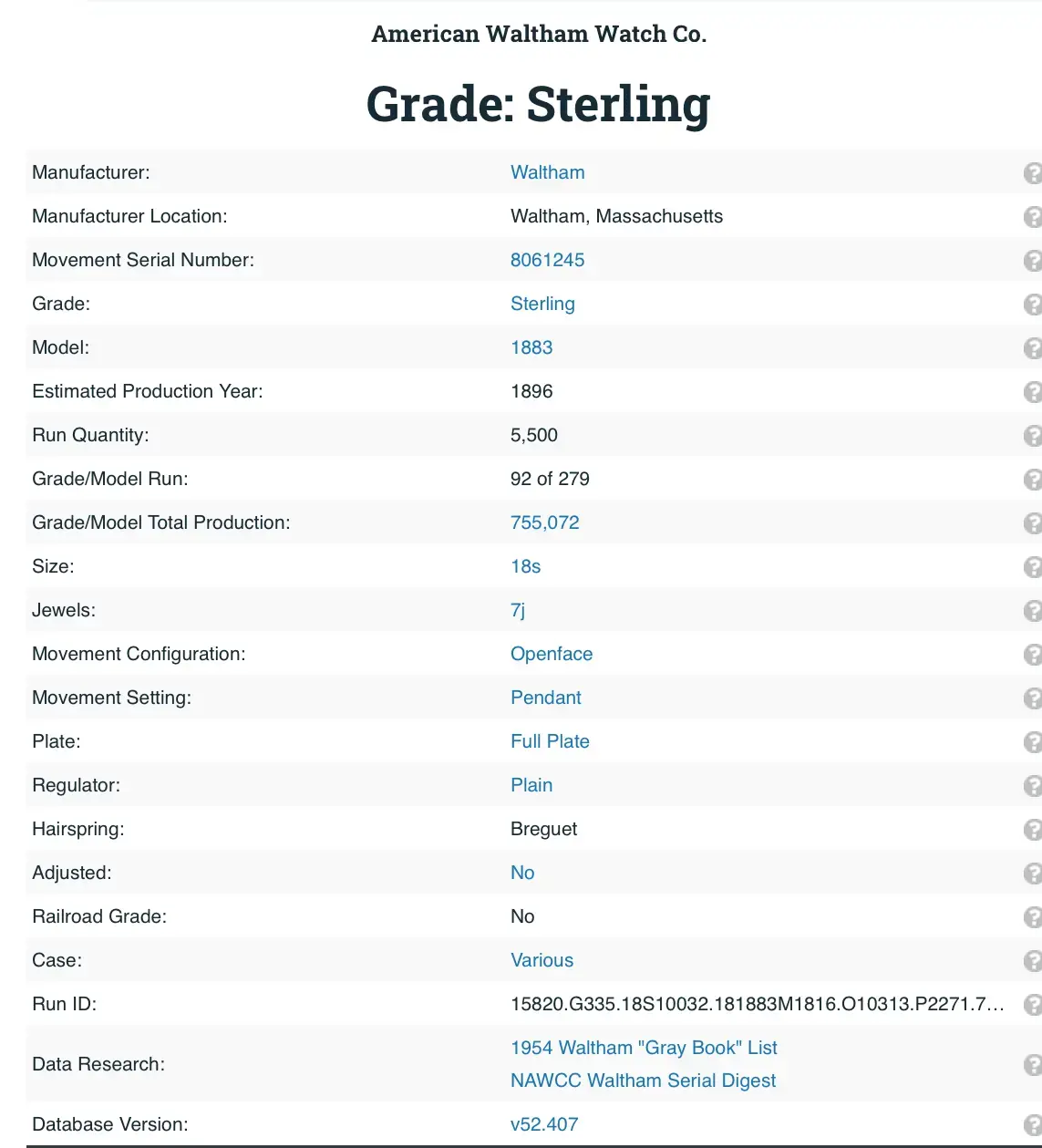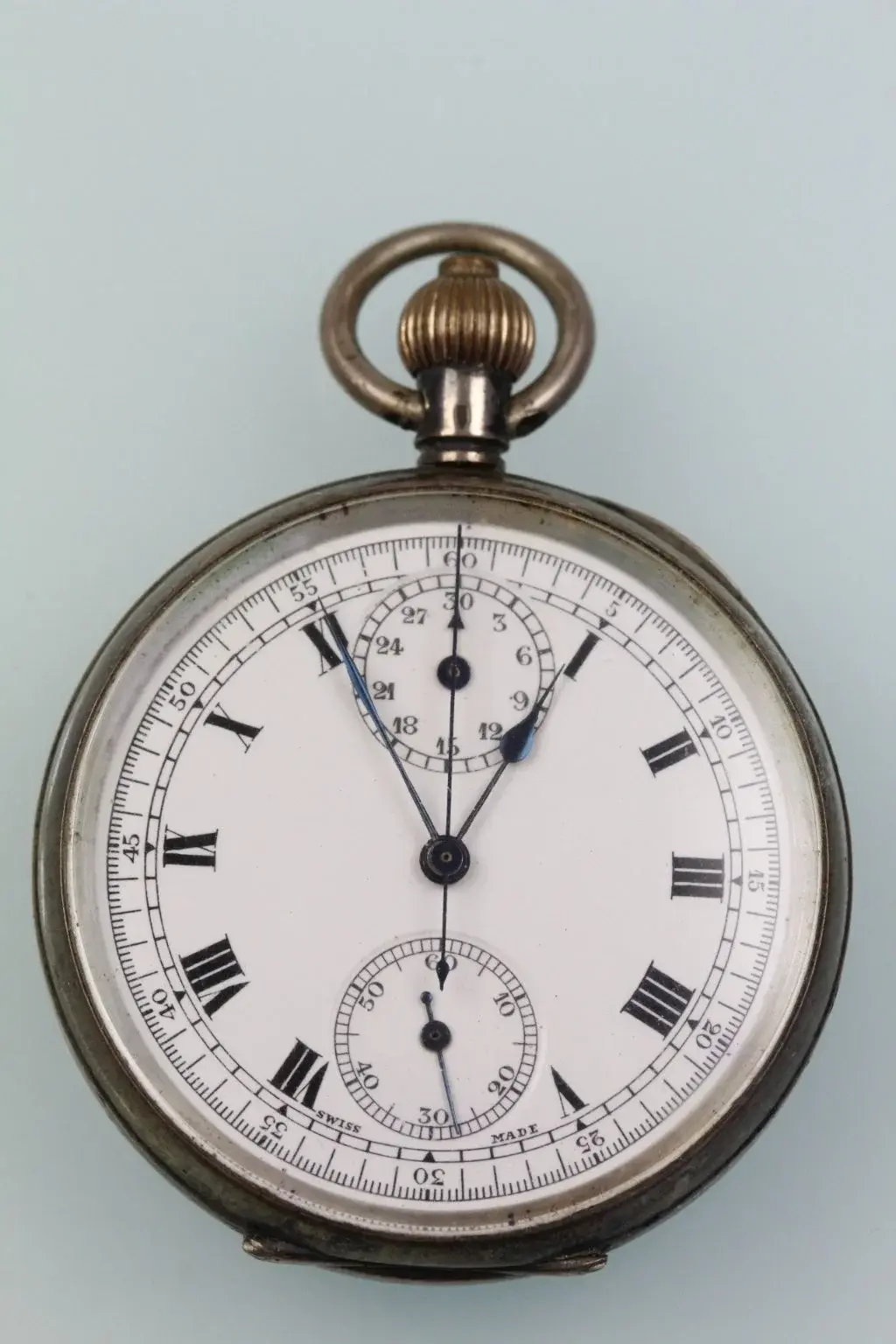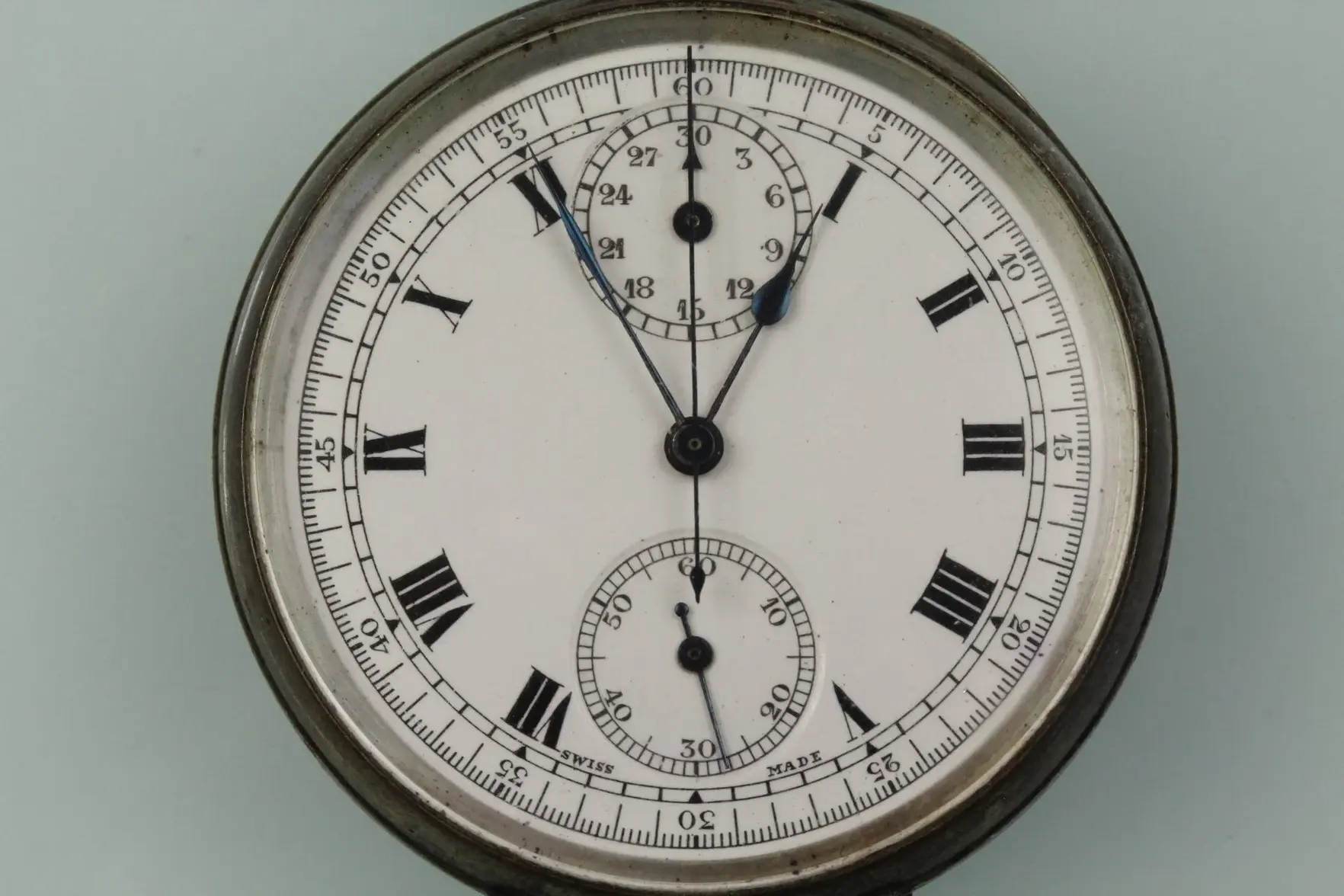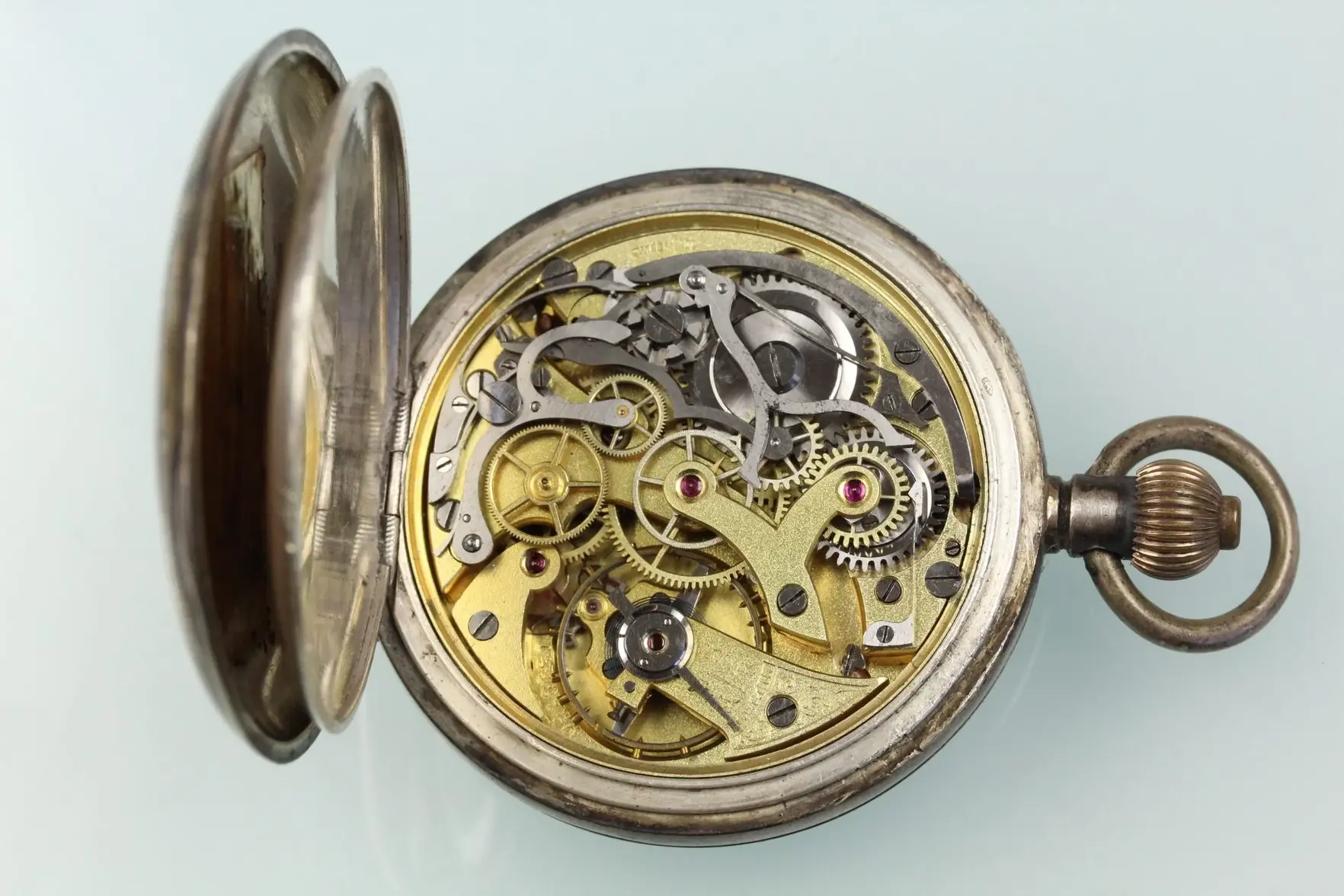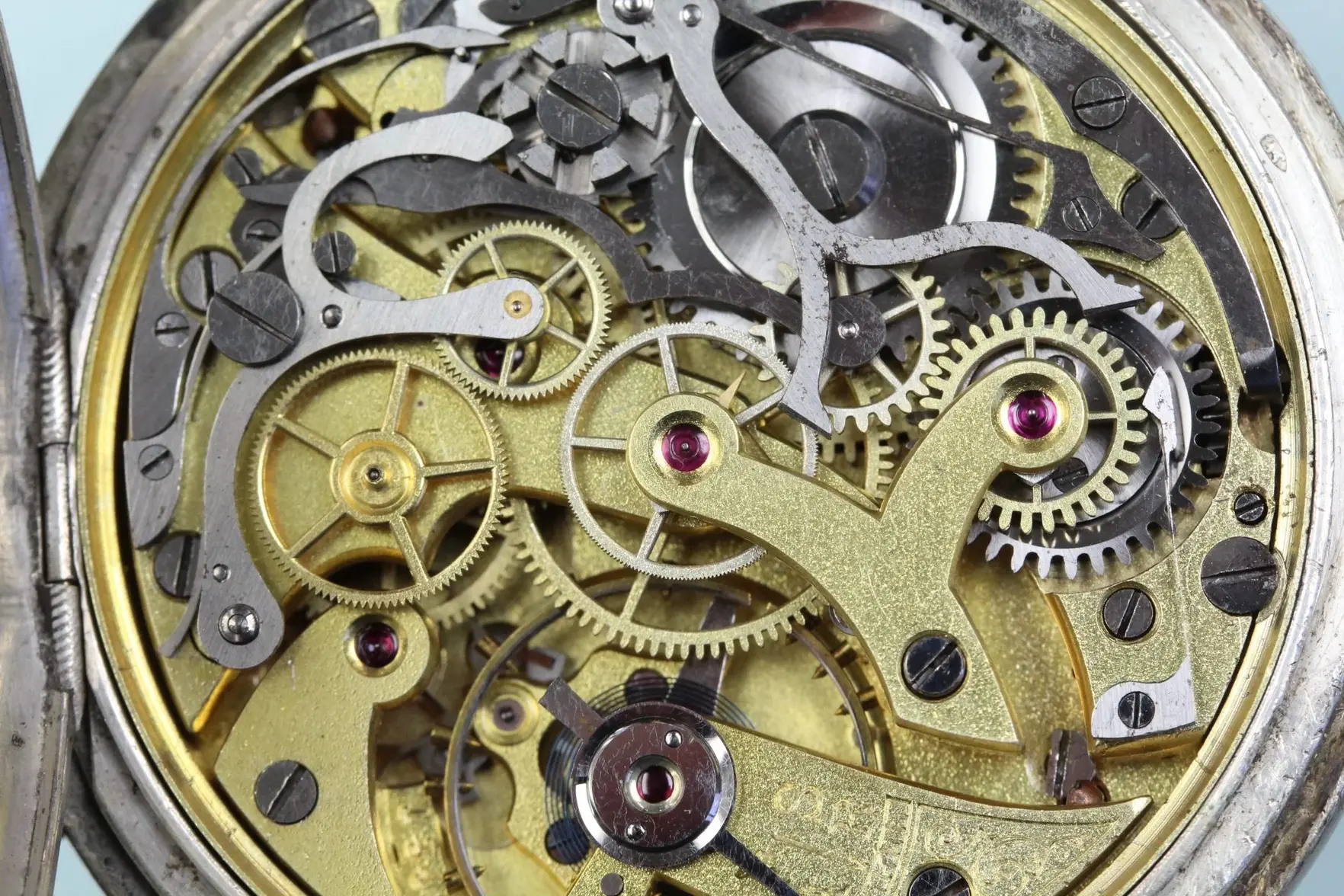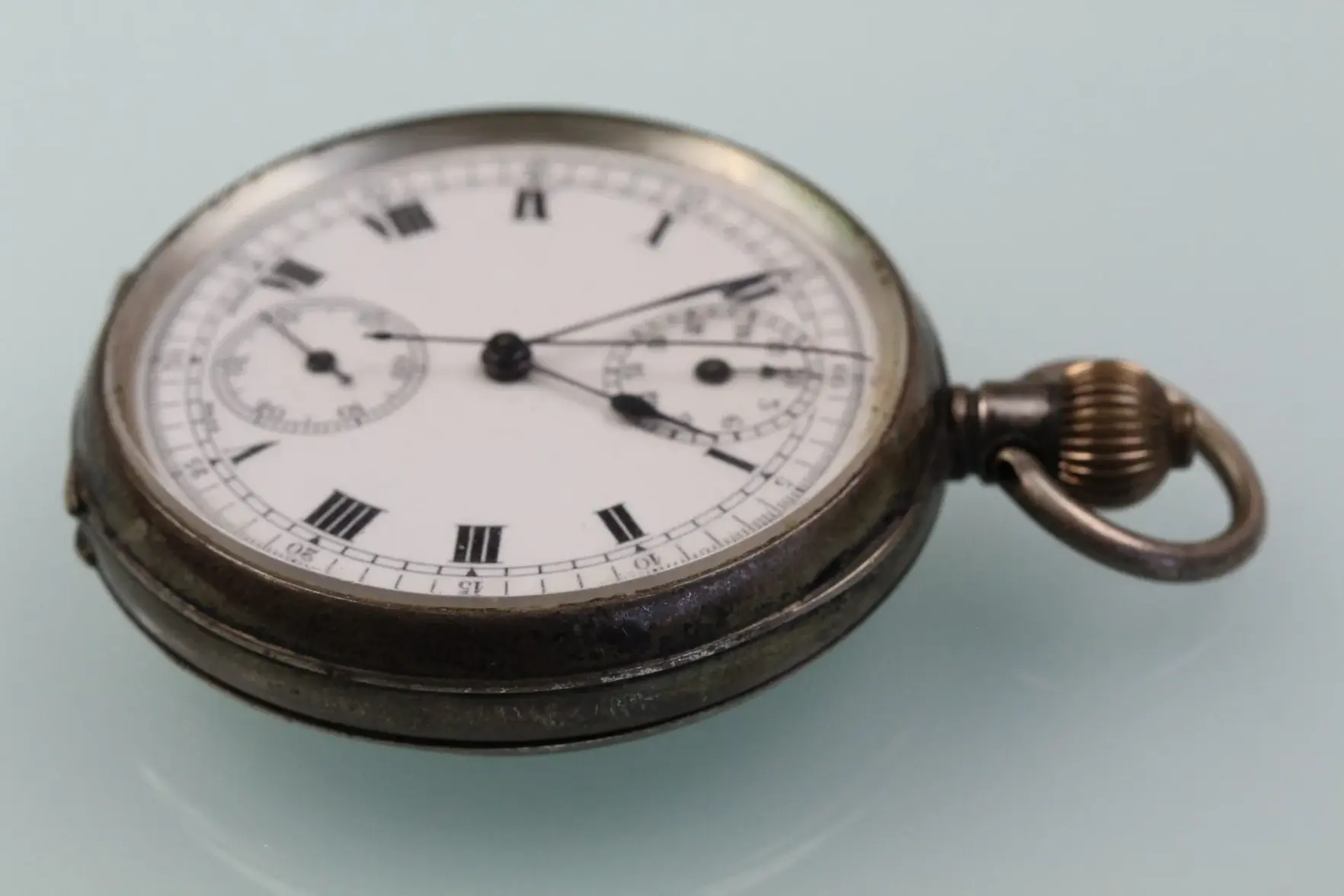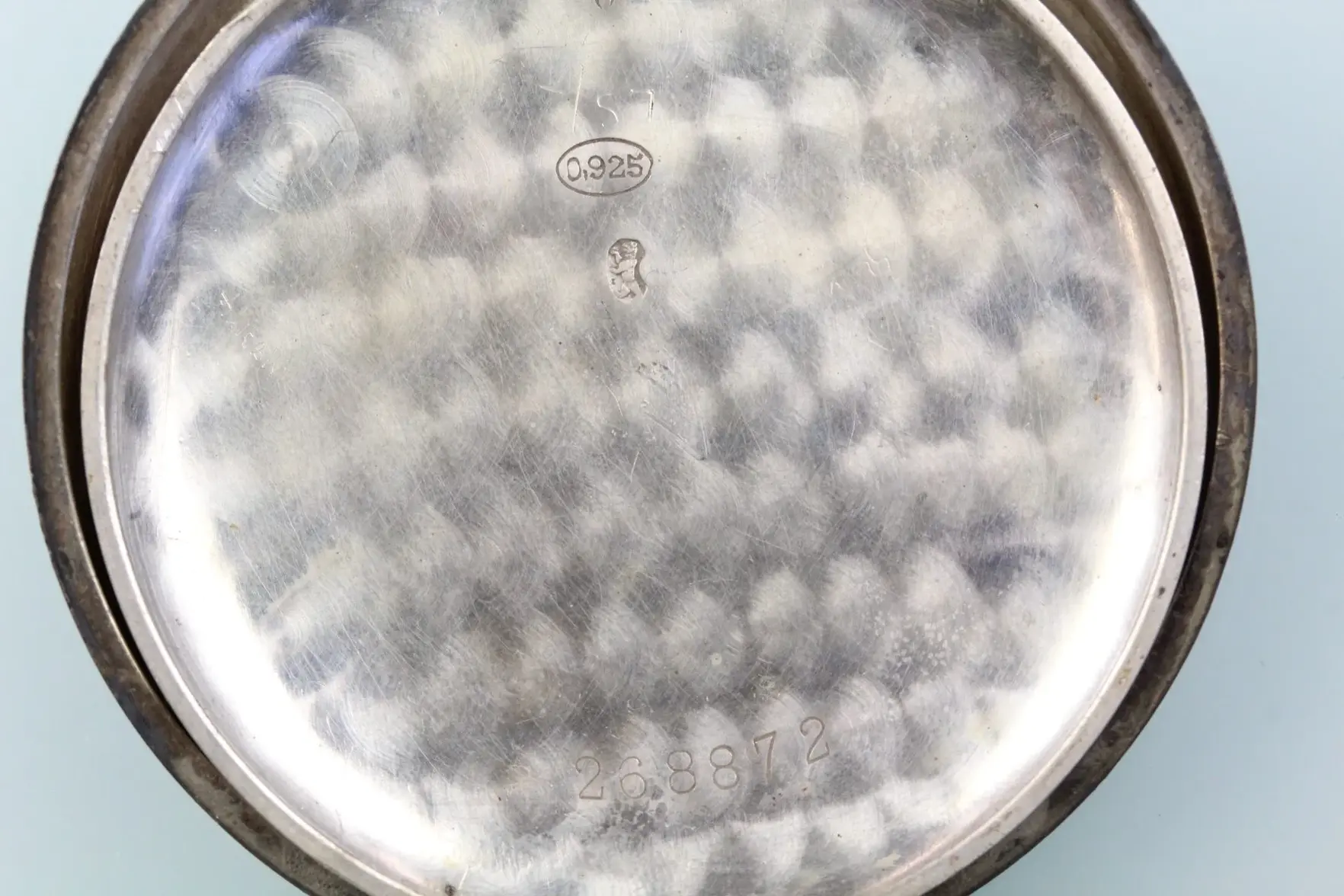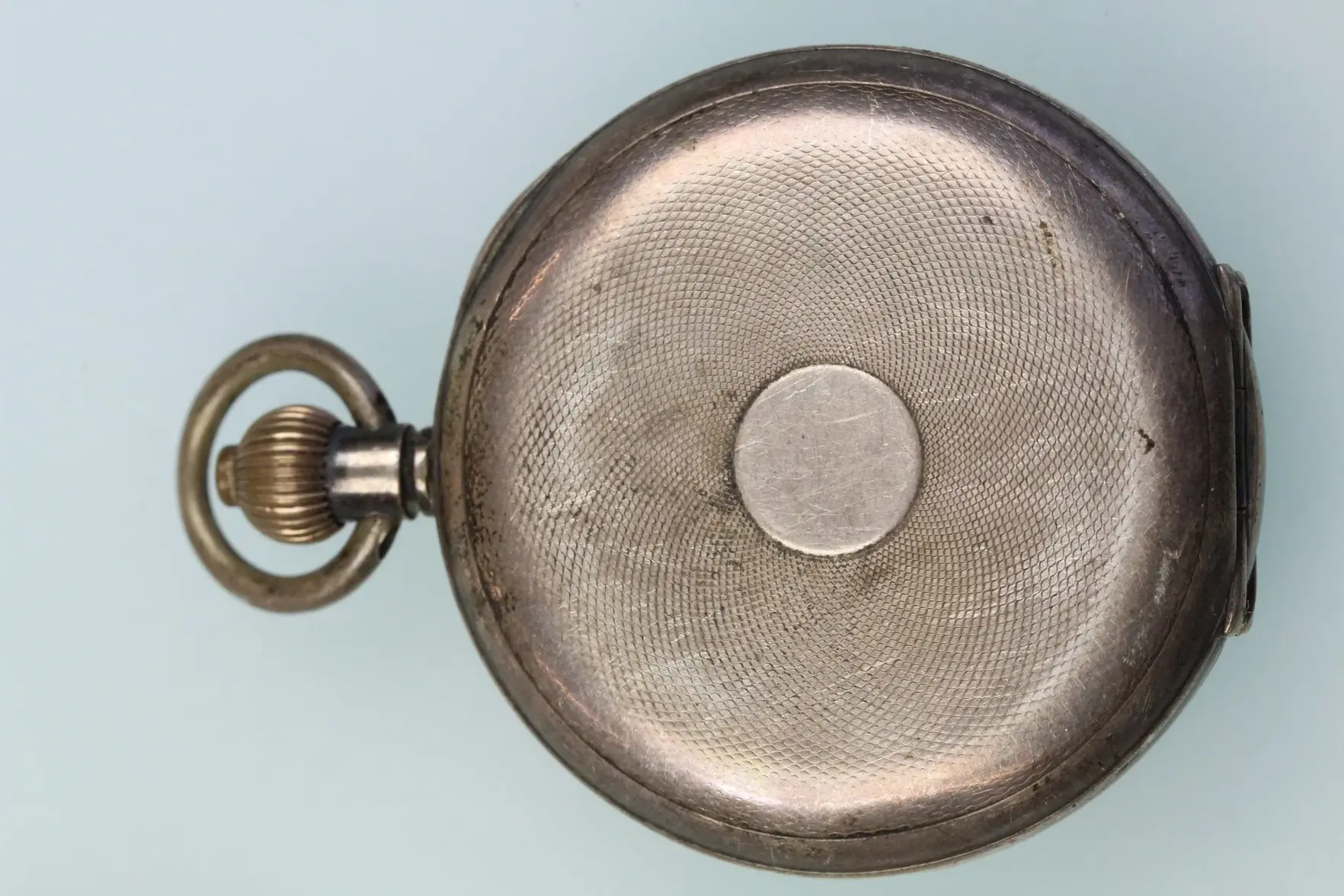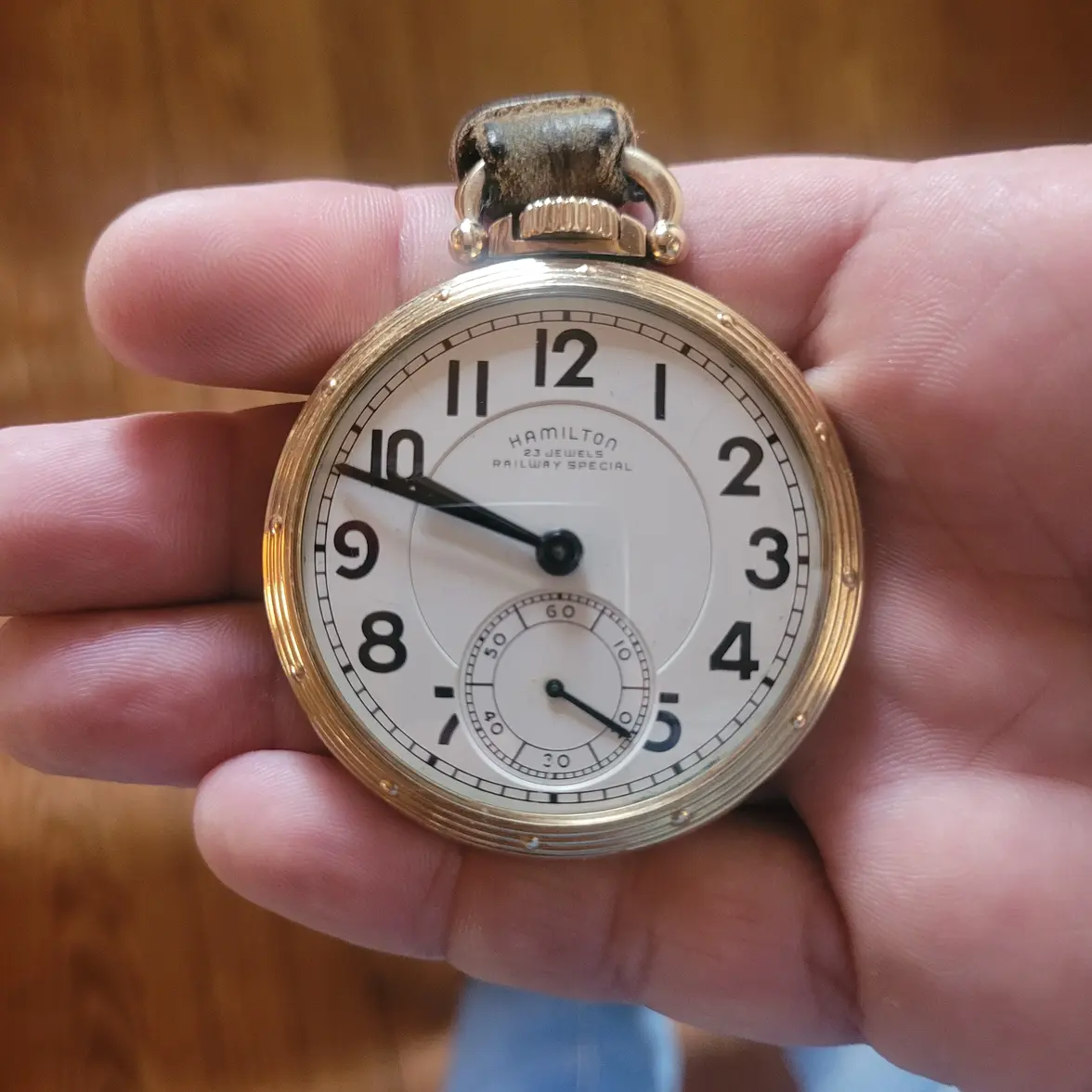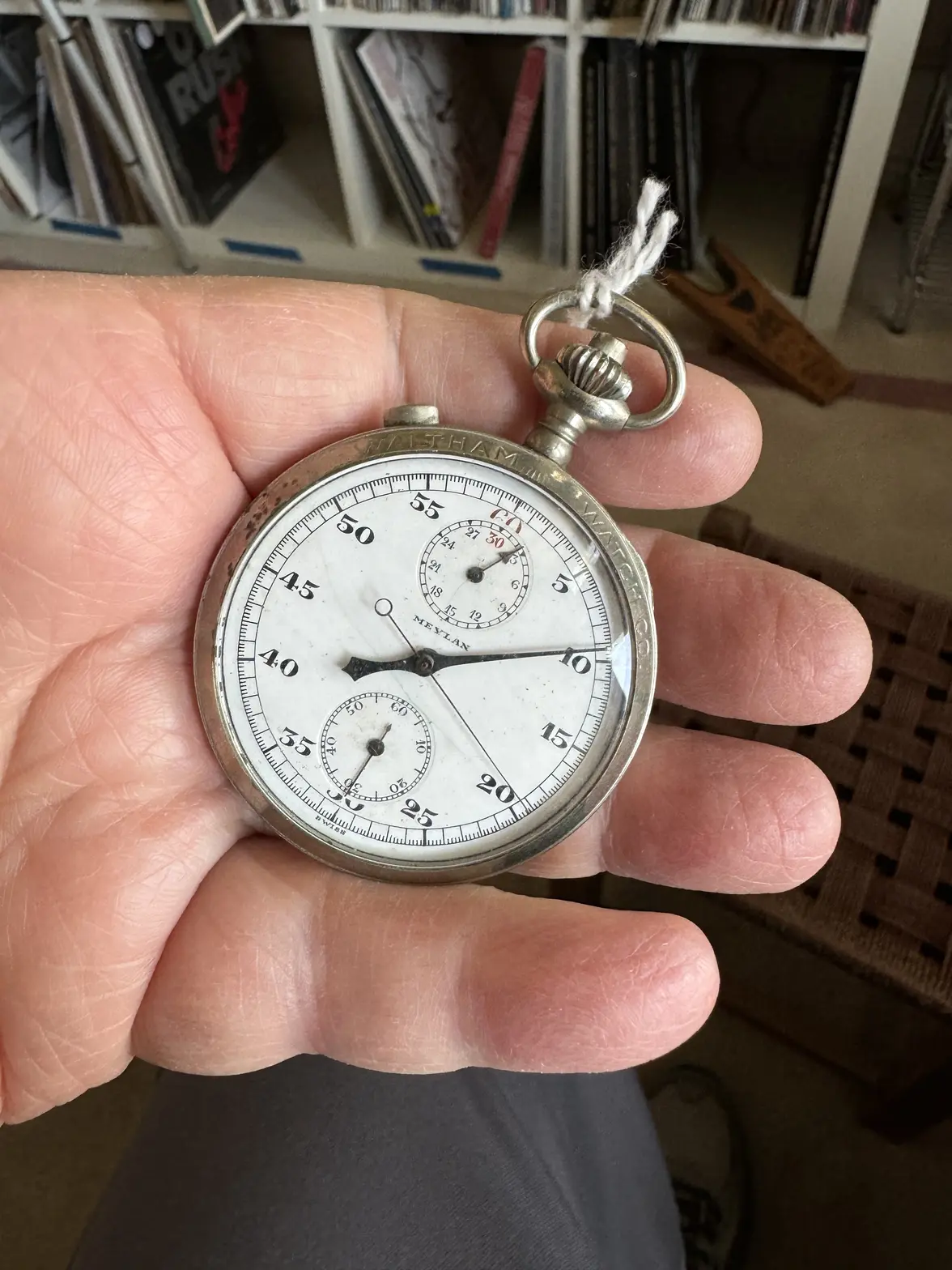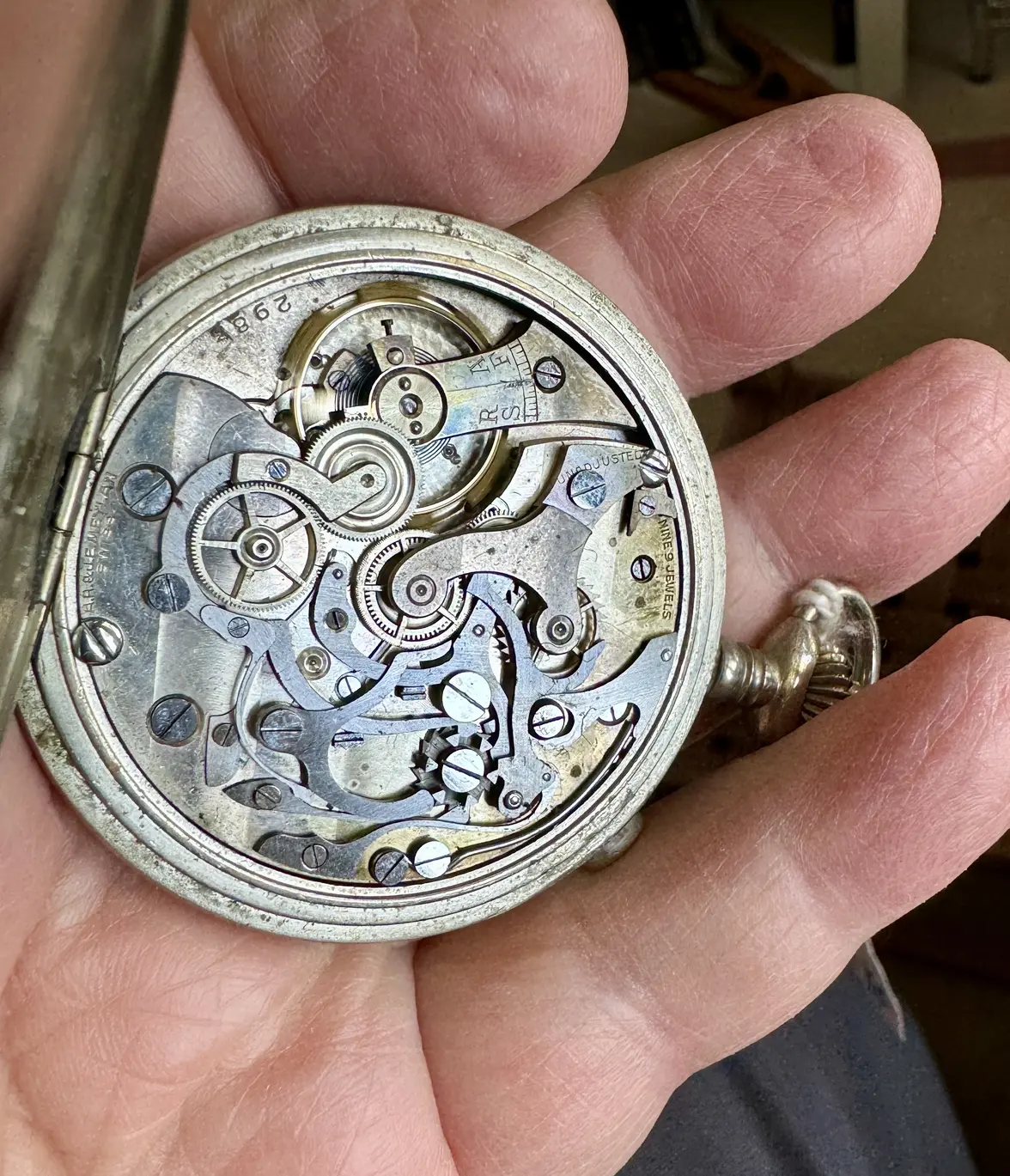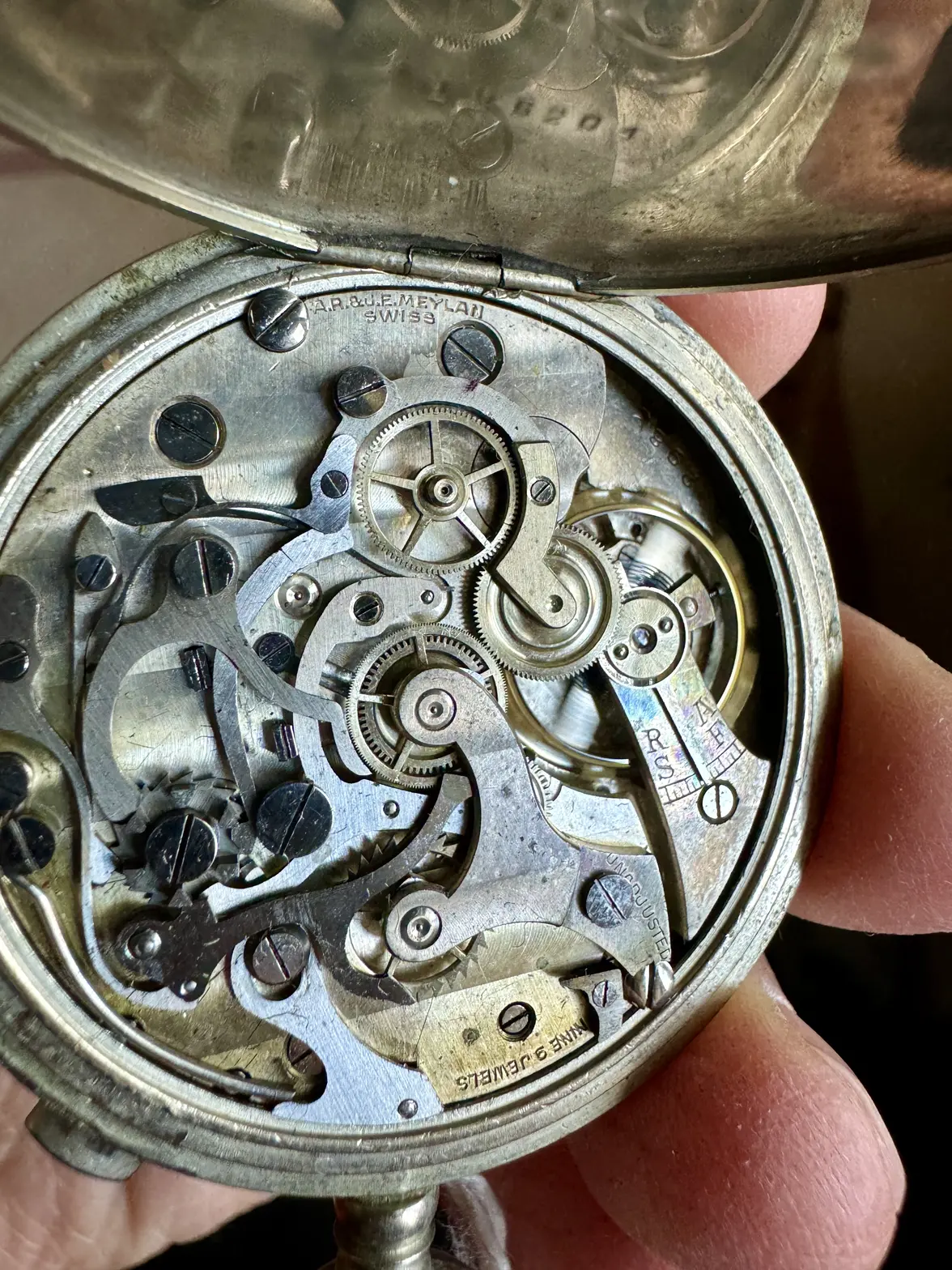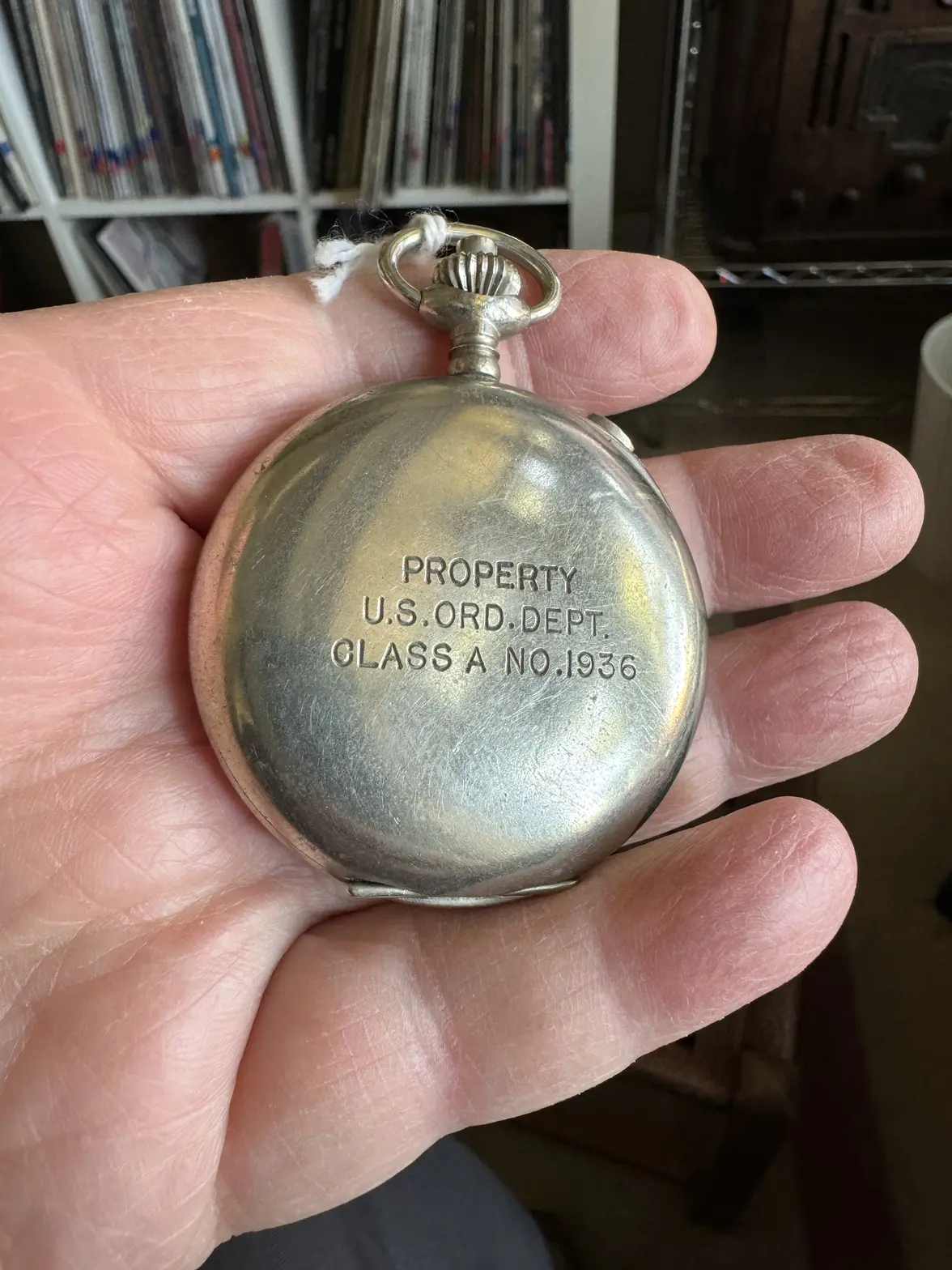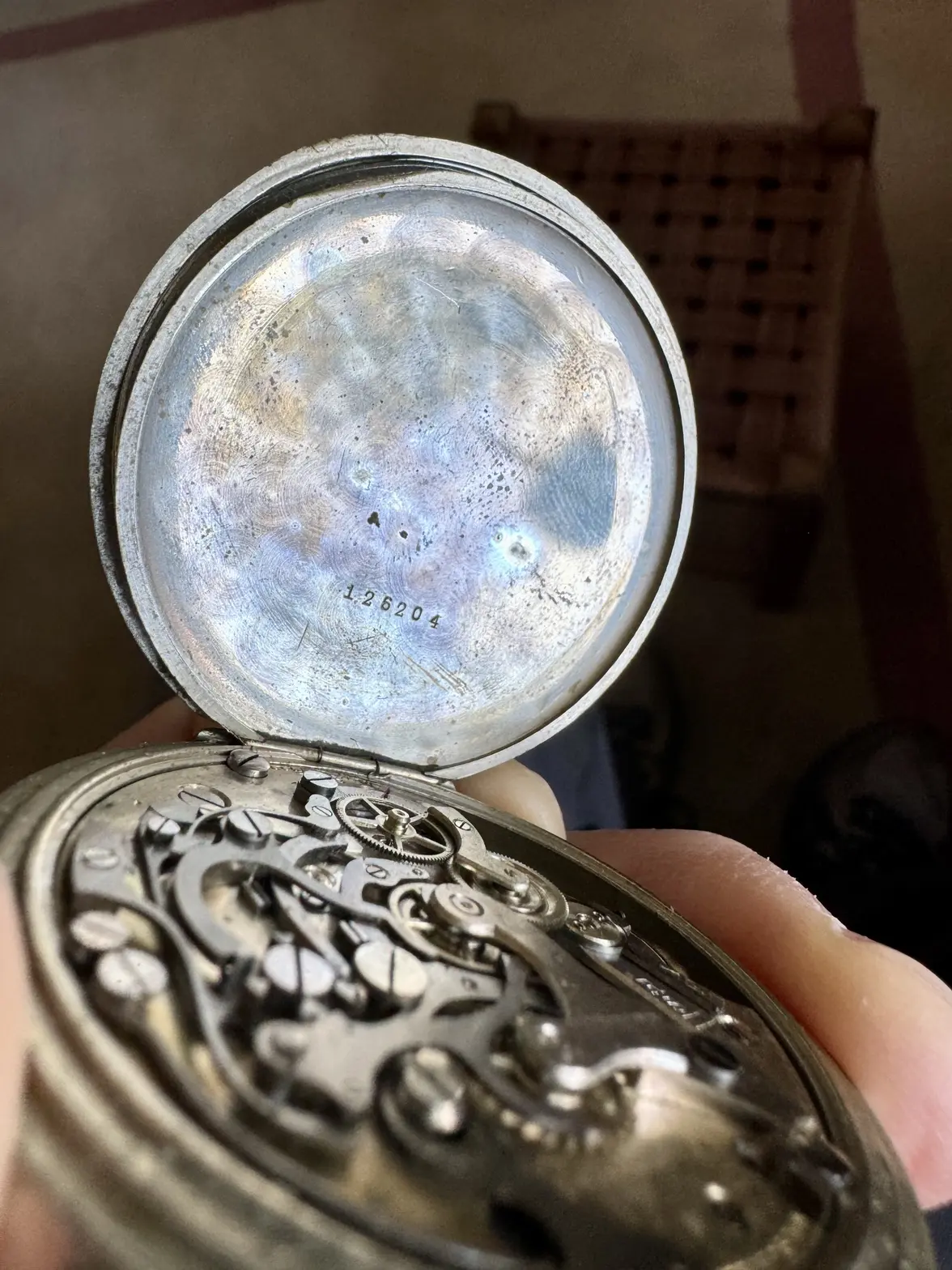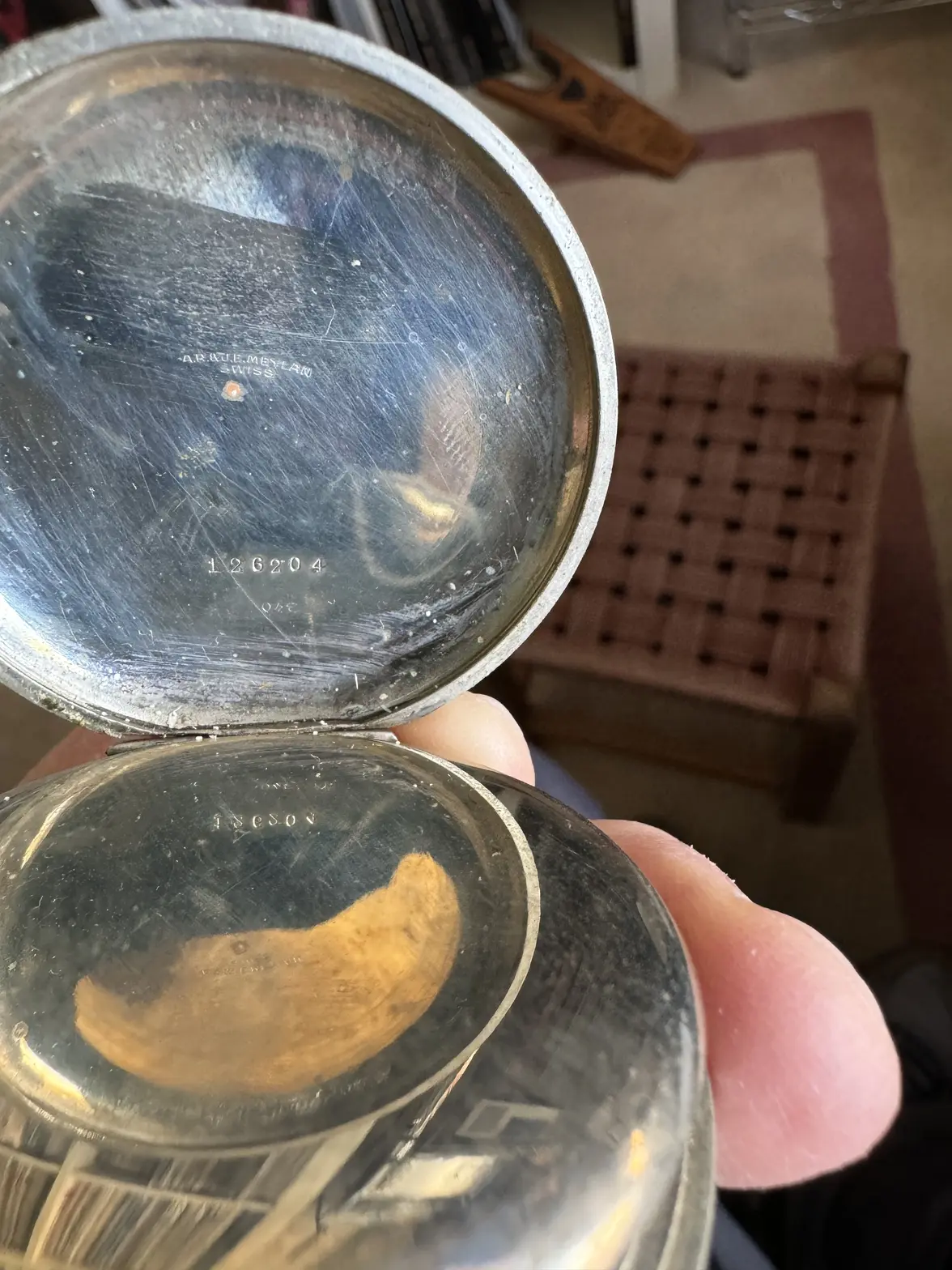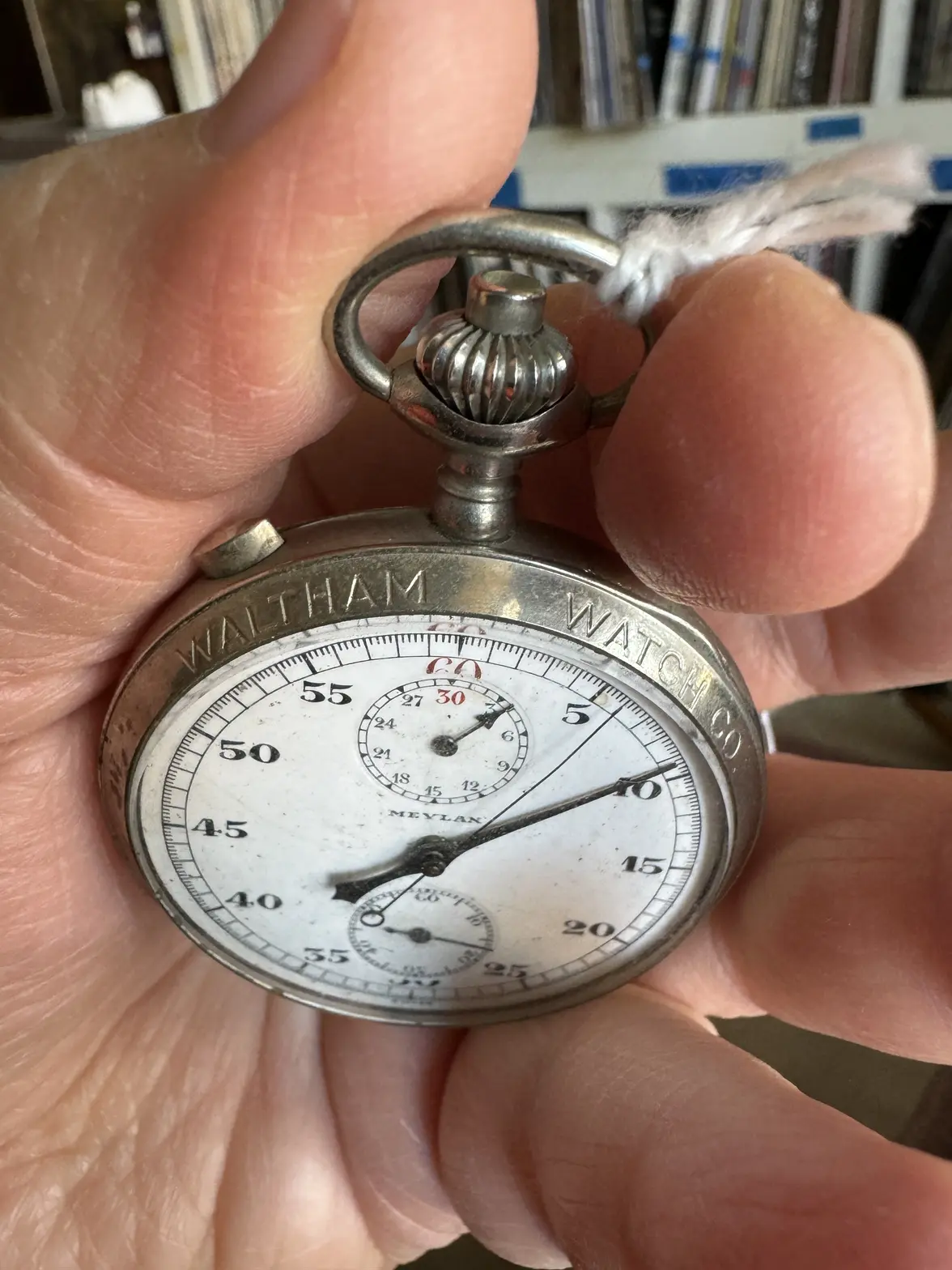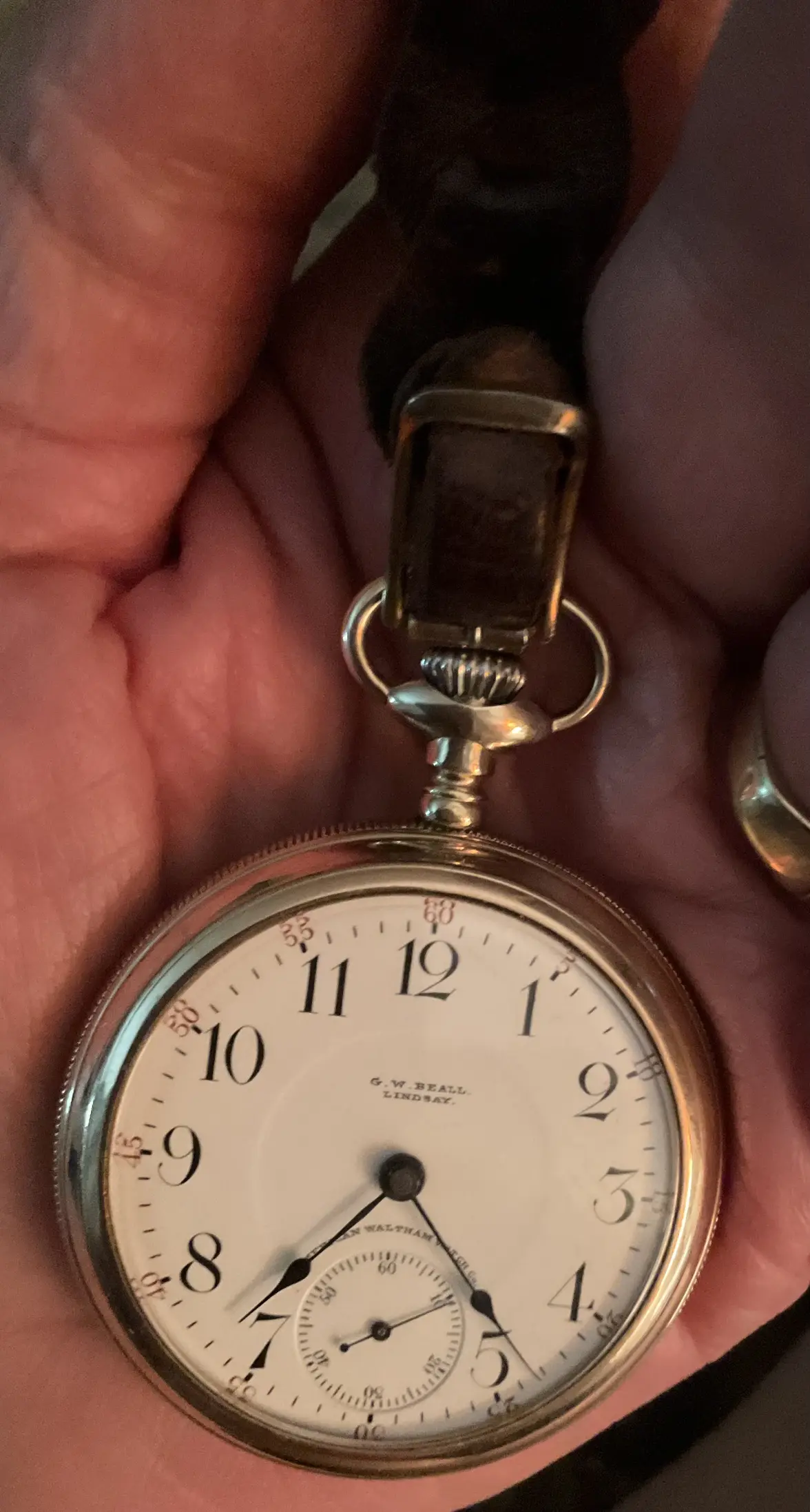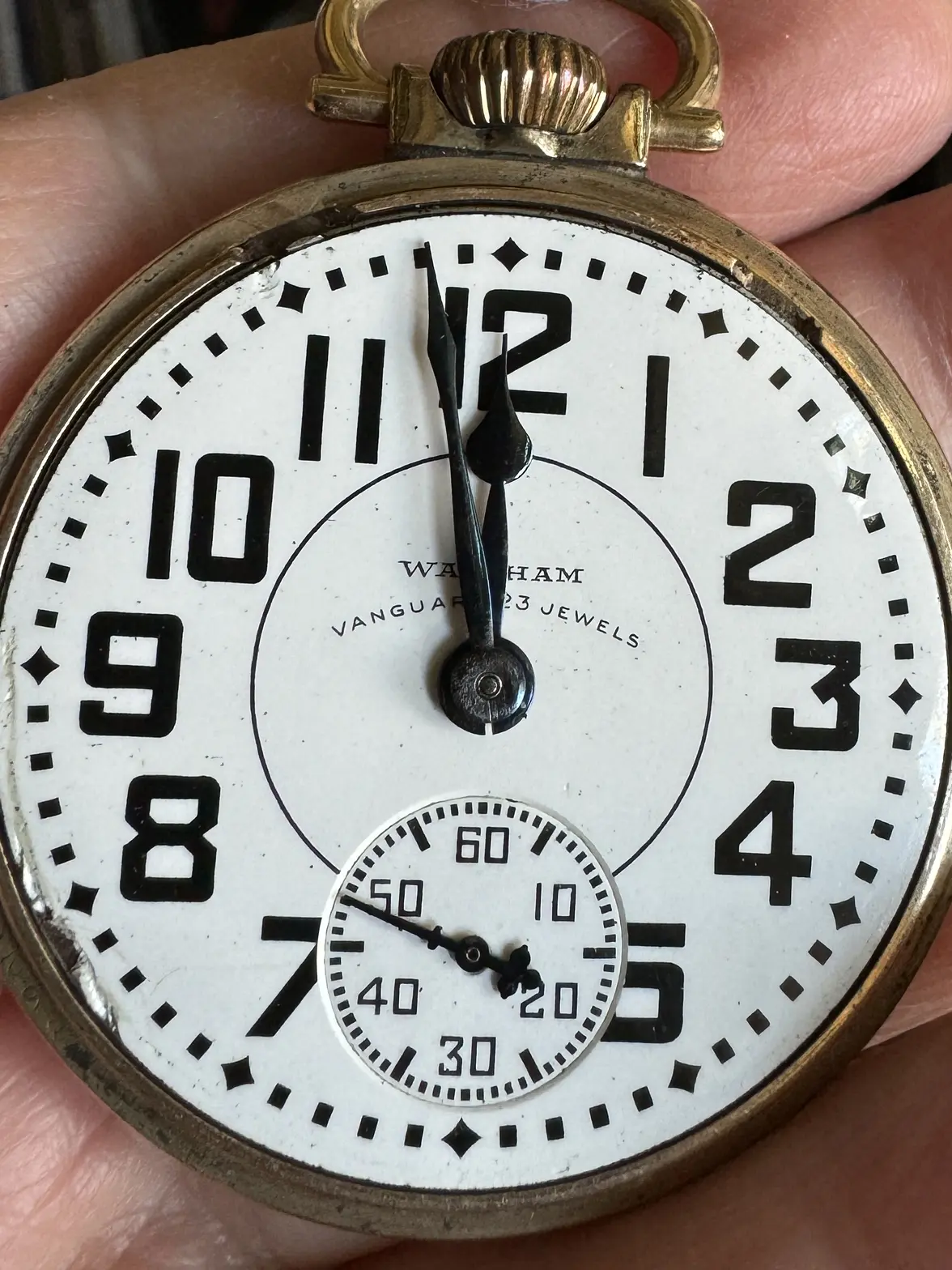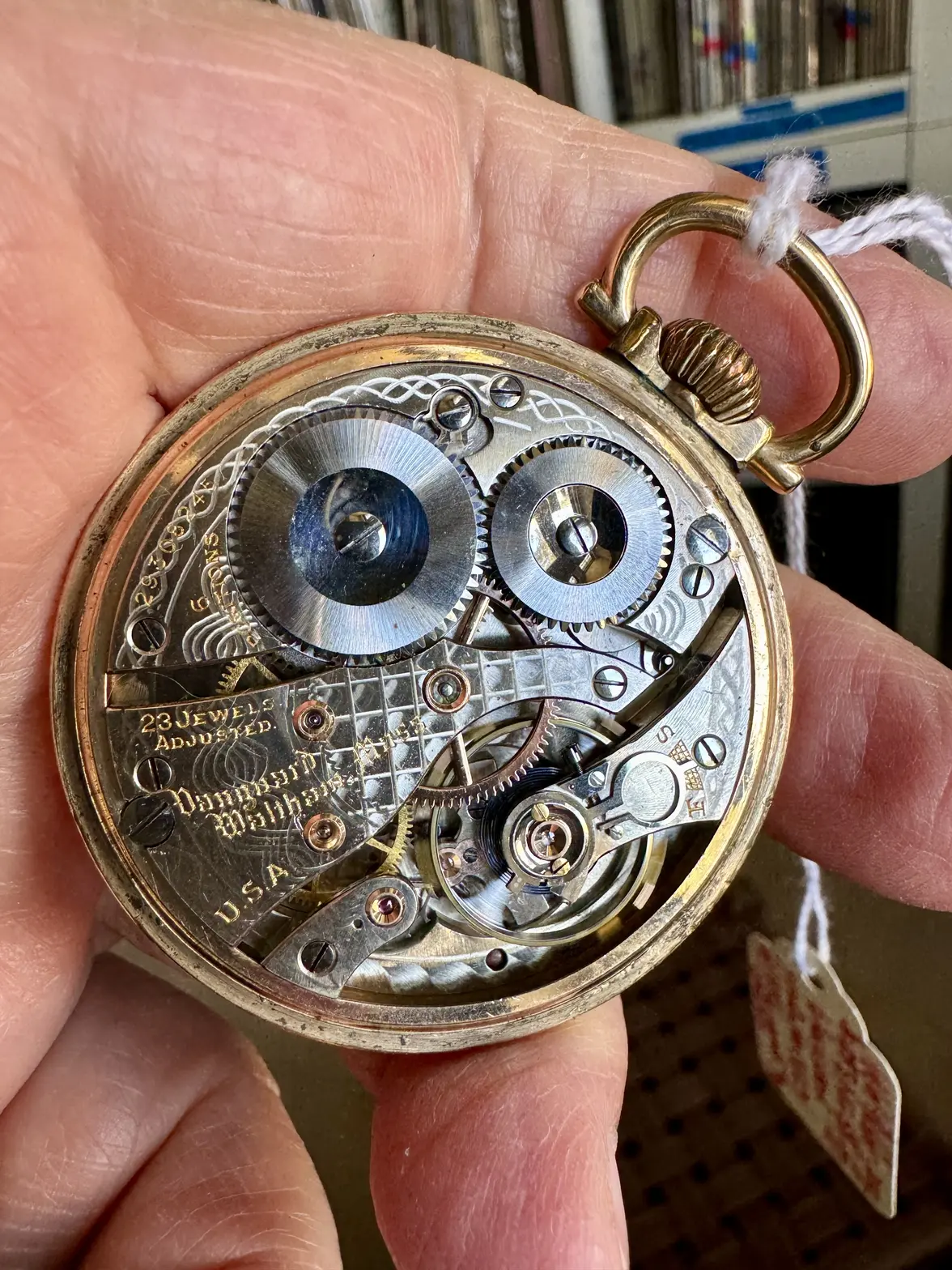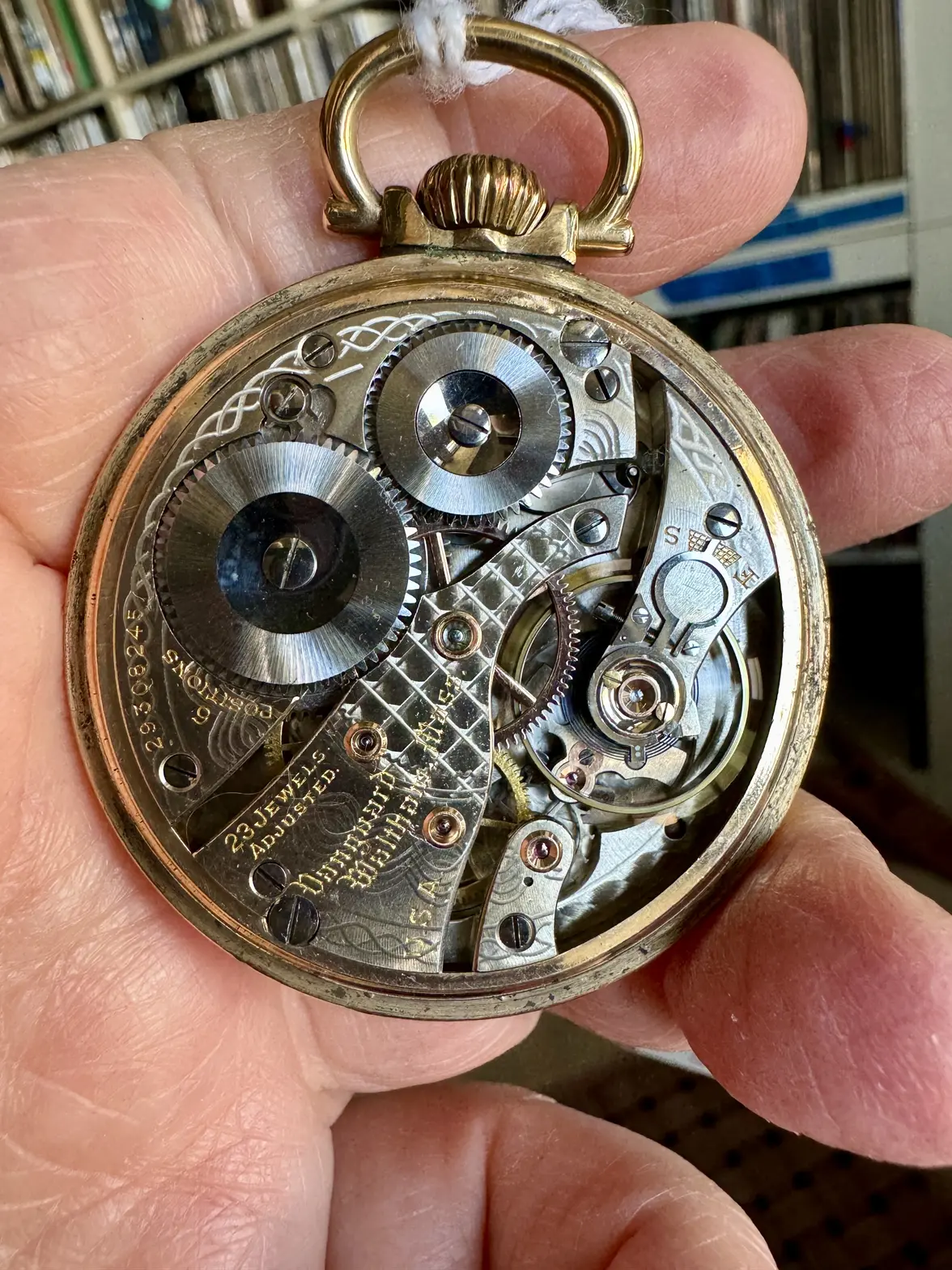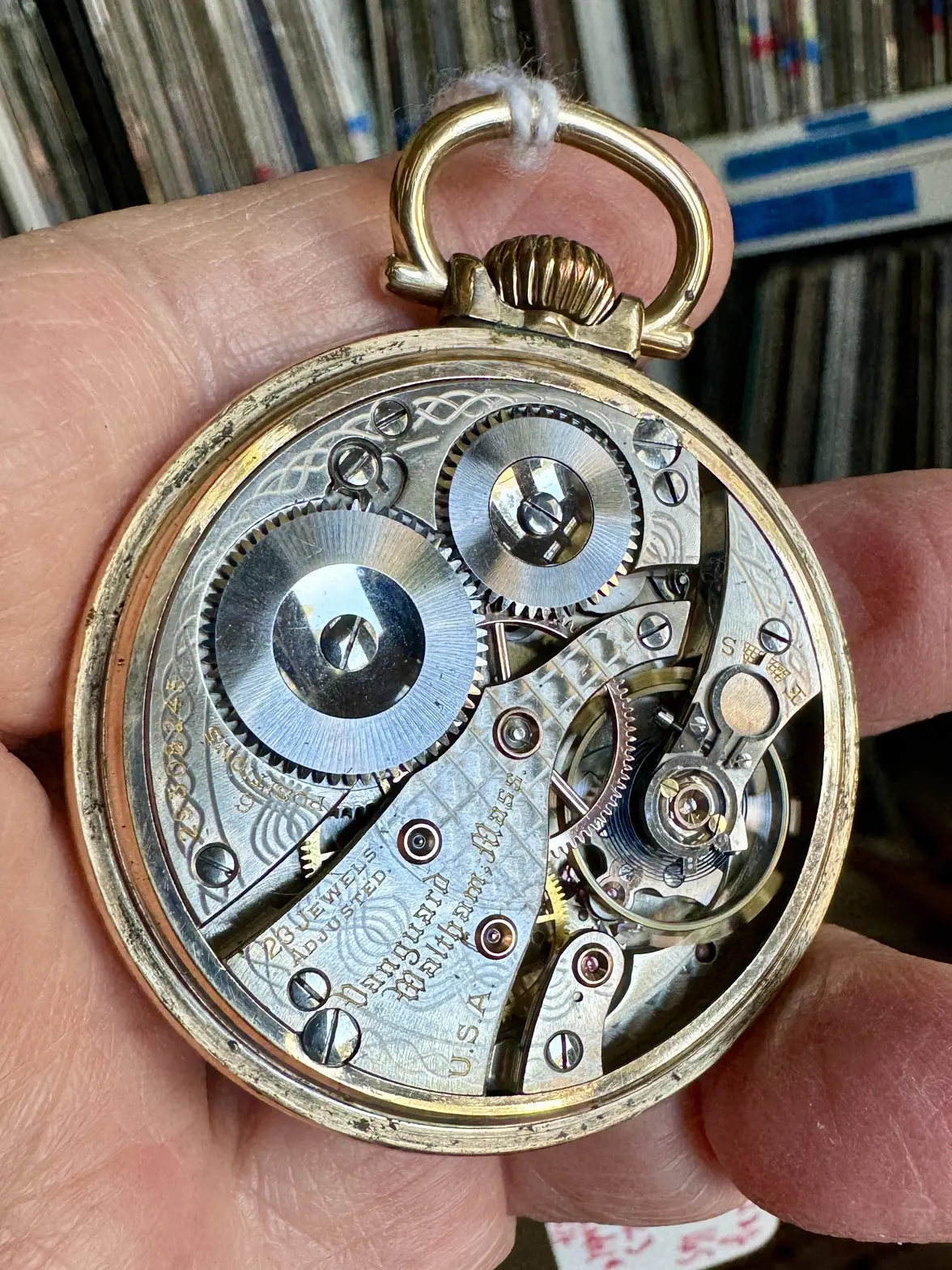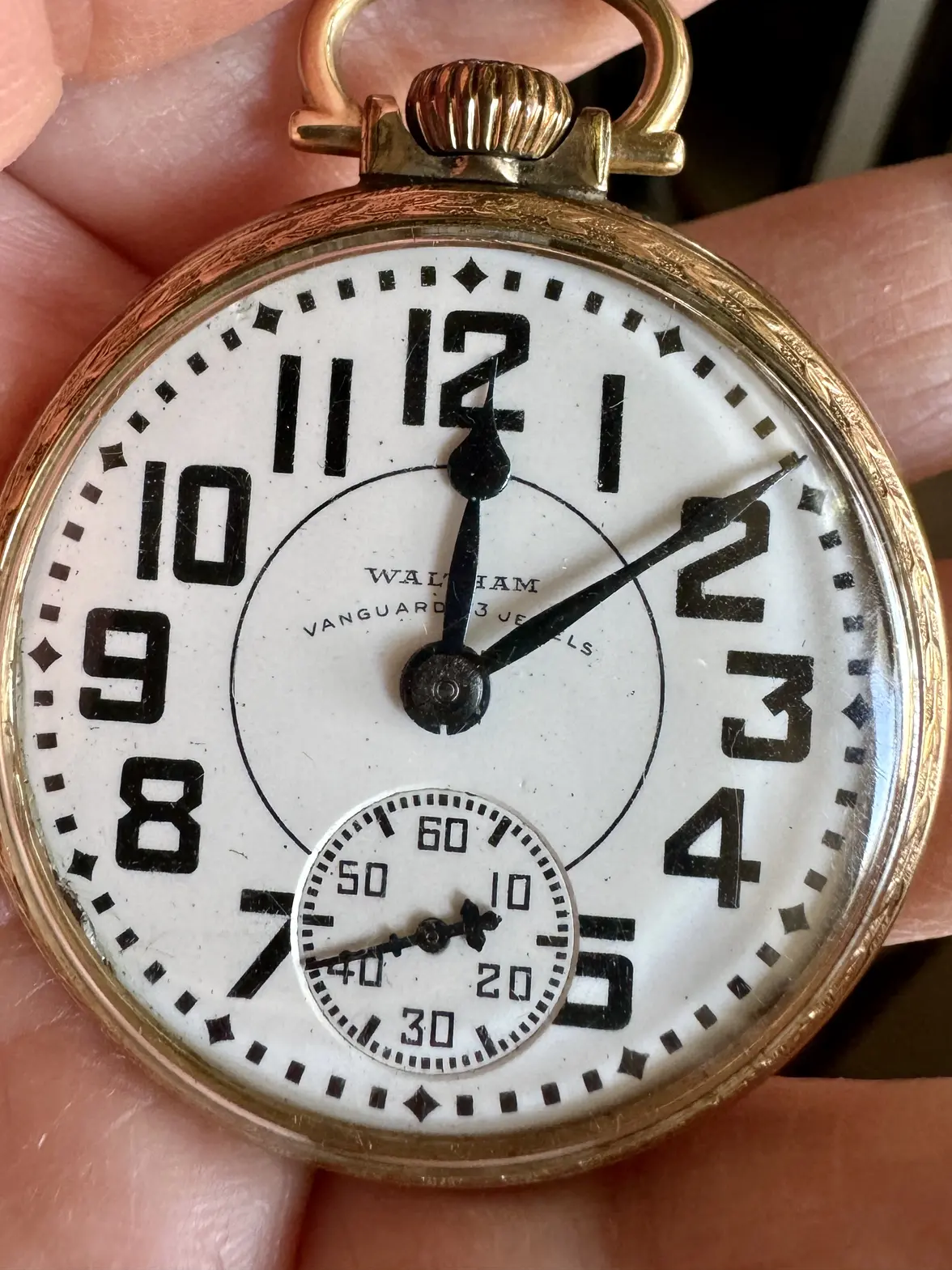Calling all Pocket Watch Buffs
Canuck
·I posted pictures of this private label Waltham 1883 model a few days ago. I was wearing it at the time, and it ran okay, but I knew I could improve its performance. So today was the day. I stripped it, conditioned it, made a few adjustments to it, and I added a NOS glass watch crystal. The original was okay, but I had a replacement, and fitted it. G W Beall was a retail jeweller and railway watch inspector in Lindsay, Ontario. The movement is engraved Canadian Railway Time Service. It has gold jewel settings, patent regulator, single roller, stem set, patent regulator. The pocketwatchdatabase listing:
https://pocketwatchdatabase.com/search/result/waltham/9536515
The third picture shows the tracing on my Vibrograph B200 timing machine. The tracing indicates the watch performing to about one second per day variation on a static test. The watch is about 125 years old. I’m very pleased with it.
https://pocketwatchdatabase.com/search/result/waltham/9536515
The third picture shows the tracing on my Vibrograph B200 timing machine. The tracing indicates the watch performing to about one second per day variation on a static test. The watch is about 125 years old. I’m very pleased with it.
DaveK
·Canuck
·Thanks to @DaveK ‘s contribution to my G W Beall Waltham pocket watch.
Of interest mostly to Canadian collectors who follow the Pocket Watch thread, there is a story behind this G W Beall watch.
-Thomas Beall emigrated from Cornwall, England circa 1850. He opened a jewellery business in Whitby, Ontario. He operated his business there for 7 years, then moved to Oakwood, Ontario.
-The family (including infant George Washington Beall) traveled to Oakwood in the dead of winter, in an open box sleigh! Thomas founded a jewellery store in Oakwood.
-Thomas Beall operated the business in Oakwood for four years, after which he moved to Lindsay, opening his business in 1863.
-Thomas Beall’s son George Washington took over the business in 1877. He is the G W Beall whose name is on the dial of my Waltham!
-George Washington Beall’s son George Godfrey Beall (born in Lindsay in 1882), enrolled in the Canadian Horological Institute in Toronto circa 1900, graduating in 1902, after having made his own pocket watch (location of it not known). He worked in the jewellery store as a watchmaker after graduating from CHI.
-In 1912, George Godfrey Beall succeeded his father, taking over the business in 1912.
This information is from Gary Fox’s excellent book on the Canadian Horological Institute founded by Henry R Playtner. After closing the CHI circa 1915, Playtner went on to found the Elgin Watchmaker’s College in Elgin, Ill.
As with some of the watches in our individual collections, the ones we own that come to us with a story, are often the ones that are extra special.
Edited to add:
The distance from Fenelon Falls Ontario to Lindsay Ontario is 26 kilometers.
This is a picture of the Beall Bilding in Lindsay which housed the Beall jewellery store.
Of interest mostly to Canadian collectors who follow the Pocket Watch thread, there is a story behind this G W Beall watch.
-Thomas Beall emigrated from Cornwall, England circa 1850. He opened a jewellery business in Whitby, Ontario. He operated his business there for 7 years, then moved to Oakwood, Ontario.
-The family (including infant George Washington Beall) traveled to Oakwood in the dead of winter, in an open box sleigh! Thomas founded a jewellery store in Oakwood.
-Thomas Beall operated the business in Oakwood for four years, after which he moved to Lindsay, opening his business in 1863.
-Thomas Beall’s son George Washington took over the business in 1877. He is the G W Beall whose name is on the dial of my Waltham!
-George Washington Beall’s son George Godfrey Beall (born in Lindsay in 1882), enrolled in the Canadian Horological Institute in Toronto circa 1900, graduating in 1902, after having made his own pocket watch (location of it not known). He worked in the jewellery store as a watchmaker after graduating from CHI.
-In 1912, George Godfrey Beall succeeded his father, taking over the business in 1912.
This information is from Gary Fox’s excellent book on the Canadian Horological Institute founded by Henry R Playtner. After closing the CHI circa 1915, Playtner went on to found the Elgin Watchmaker’s College in Elgin, Ill.
As with some of the watches in our individual collections, the ones we own that come to us with a story, are often the ones that are extra special.
Edited to add:
The distance from Fenelon Falls Ontario to Lindsay Ontario is 26 kilometers.
This is a picture of the Beall Bilding in Lindsay which housed the Beall jewellery store.
Edited:
BAJJ
·So, I have decided to try watch making as a hobby, I’m retired and of a certain age so why not. I’ve bought myself a bunch of tools and to kick me off I bought an old pocket watch in and estate sale. The watch arrived today and I thought it would be something simple and although I think it is, it looks fabulous, is running and I’m wondering do I really want to mess about with it. The movement is beautiful, case also, it’s running ok, question is is it something of value that I need to consider before I start practicing on? The glass was loose when I got it and I removed the hands before opening the screw down case back to expose the lovely movement. Cheers, BAJJ
HamDoctor
·So, I have decided to try watch making as a hobby, I’m retired and of a certain age so why not. I’ve bought myself a bunch of tools and to kick me off I bought an old pocket watch in and estate sale. The watch arrived today and I thought it would be something simple and although I think it is, it looks fabulous, is running and I’m wondering do I really want to mess about with it. The movement is beautiful, case also, it’s running ok, question is is it something of value that I need to consider before I start practicing on? The glass was loose when I got it and I removed the hands before opening the screw down case back to expose the lovely movement. Cheers, BAJJ
There's a lot of movements on eBay that came from scrapped cases, some of which may even work, some of which are in lots. Get yourself some big pocket watch movements, 16- or 18-size, things will get tiny soon enough.
Wish you good success! I wussed out, but with time, patience, perseverance and a well-ordered, well-lighted workplace you'll get there. May all your parts remain on your workbench, and never join the "parts graveyard that is the floor".
BAJJ
·I'd try and practice on some loose movements first, before I start the work on a watch that is functioning (and good-looking, too). I remember reading that you will mess up the first one that you start on ... which seems likely. It's not that I did get far on my watchmaking "excursion" - eyesight being a problem - but this is one thing I remember. You have time, so start out slow ;-)
There's a lot of movements on eBay that came from scrapped cases, some of which may even work, some of which are in lots. Get yourself some big pocket watch movements, 16- or 18-size, things will get tiny soon enough.
Wish you good success! I wussed out, but with time, patience, perseverance and a well-ordered, well-lighted workplace you'll get there. May all your parts remain on your workbench, and never join the "parts graveyard that is the floor".
This watch cost €50 in an estate sale, my intent was that it was just to practice on but it is in such lovely condition I think I’ll leave it as is and get something else.
Canuck
·The Elgin is an 18-size, full plate model. I don’t recommend you start out with an 18-size full plate movement as your first victim! There are many more pitfalls with one of these, compared to a bridge model. Maybe start out with a 16-size Chinese made clone of an ETA 6498. They’re available cheap, and if you do it right, it will run when you’re done. If it doesn’t run, do it again. If you don’t succeed, no great loss. Much easier to work on than a full plate model.
BAJJ
·The Elgin is an 18-size, full plate model. I don’t recommend you start out with an 18-size full plate movement as your first victim! There are many more pitfalls with one of these, compared to a bridge model. Maybe start out with a 16-size Chinese made clone of an ETA 6498. They’re available cheap, and if you do it right, it will run when you’re done. If it doesn’t run, do it again. If you don’t succeed, no great loss. Much easier to work on than a full plate model.
TexOmega
·So, I have decided to try watch making as a hobby, I’m retired and of a certain age so why not. I’ve bought myself a bunch of tools and to kick me off I bought an old pocket watch in and estate sale. The watch arrived today and I thought it would be something simple and although I think it is, it looks fabulous, is running and I’m wondering do I really want to mess about with it. The movement is beautiful, case also, it’s running ok, question is is it something of value that I need to consider before I start practicing on? The glass was loose when I got it and I removed the hands before opening the screw down case back to expose the lovely movement. Cheers, BAJJ
This example is a step up in quality from a dollar watch, but nothing of intrinsic value to a collector. A good, solid watch at the time.
I can only add, start with something that works in your hand prior to disassembly.......if it don't run afterwards, there is only one variable at fault.🙃🙃
Good luck and keep us updated.
Waltesefalcon
·I'll second @Canuck 's suggestion. A full plate watch is much more difficult to reassemble than a bridge plate watch.
BAJJ
·DaveK
·Does anyone here want this? With this representing my entire stash of PW parts, I will never put in the work to get it up and running. For someone with more skills or less sense, it’s yours for the cost of shipping from Vancouver, Canada. That’d be about $20 CAD within Canada, and a bit less shipped to the US.
ghce
·Canuck
·Still wearing my 18-size, private label, 1883 model Waltham. Over time, the past couple weeks, I have discovered a problem that I was unaware that it had. After de-magnetizing, polishing balance staff pivots, re-cleaning, and otherwise struggling to find why it was periodically running erratically, I thought I had discovered the problem. The rim of the balance wheel was running about .02 of a millimetre from the top plate. I raised the rim of the wheel, and re-trued the balance. Still no joy. Ran fine face down, but in the pendant positions or face up, not running properly. I finally twigged to the problem!
The watch is close to 125 years old, and it could well have proven less than reliable over all its years. The collet on the hairspring was put on upside down! Either that, or if the hairspring had the collet installed on it when it went to the tech who formed the hairspring over-coil, he had the hairspring oriented with the top side of the collet DOWN rather than up.
Hairsprings are installed high on the collet so there is clearance between the hairspring coils on the balance arms, to give clearance between the coils and balance arms! These collets have a TOP side that that has the edge of the hole in the collet rounded. The bottom side of the collet is FLAT! With the hairspring installed on the balance wheel (collet upside down), there were some positions when the coils of the hairspring were too low, and contacting the balance arms! Two ways to solve this problem. Remove the collet from the hairspring, flip it over, and re-install it. Not a job for the faint of heart. The other solution is to raise the collet enough to give clearance between the coils of the hairspring and balance arms! That’s the option I chose. Runs fine now. Worn on my @Duracuir1 leather lanyard.
The watch is close to 125 years old, and it could well have proven less than reliable over all its years. The collet on the hairspring was put on upside down! Either that, or if the hairspring had the collet installed on it when it went to the tech who formed the hairspring over-coil, he had the hairspring oriented with the top side of the collet DOWN rather than up.
Hairsprings are installed high on the collet so there is clearance between the hairspring coils on the balance arms, to give clearance between the coils and balance arms! These collets have a TOP side that that has the edge of the hole in the collet rounded. The bottom side of the collet is FLAT! With the hairspring installed on the balance wheel (collet upside down), there were some positions when the coils of the hairspring were too low, and contacting the balance arms! Two ways to solve this problem. Remove the collet from the hairspring, flip it over, and re-install it. Not a job for the faint of heart. The other solution is to raise the collet enough to give clearance between the coils of the hairspring and balance arms! That’s the option I chose. Runs fine now. Worn on my @Duracuir1 leather lanyard.
